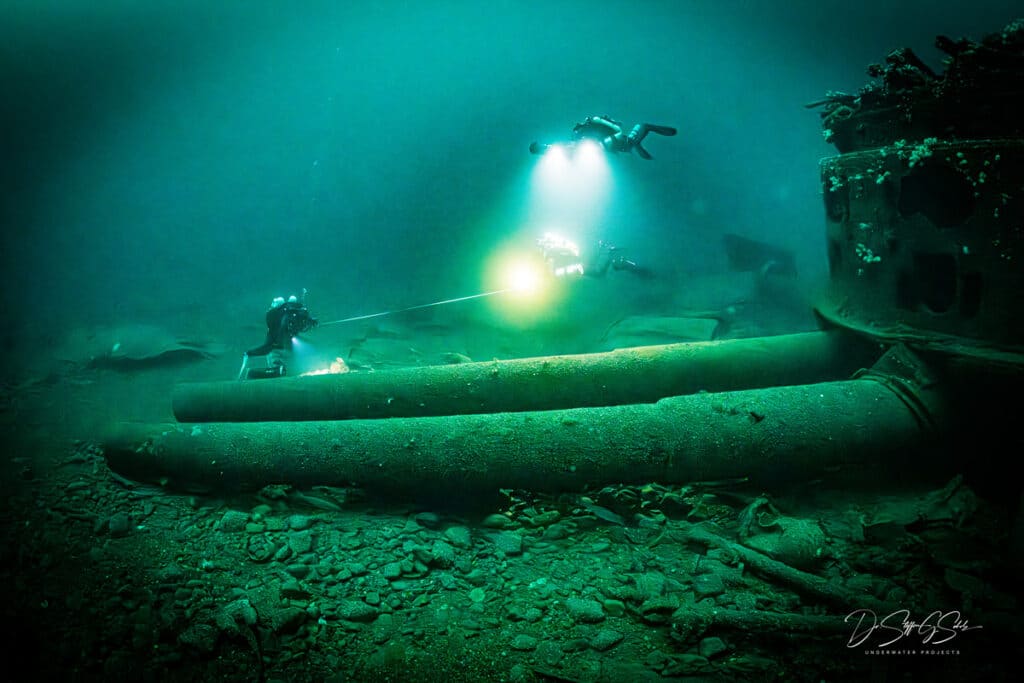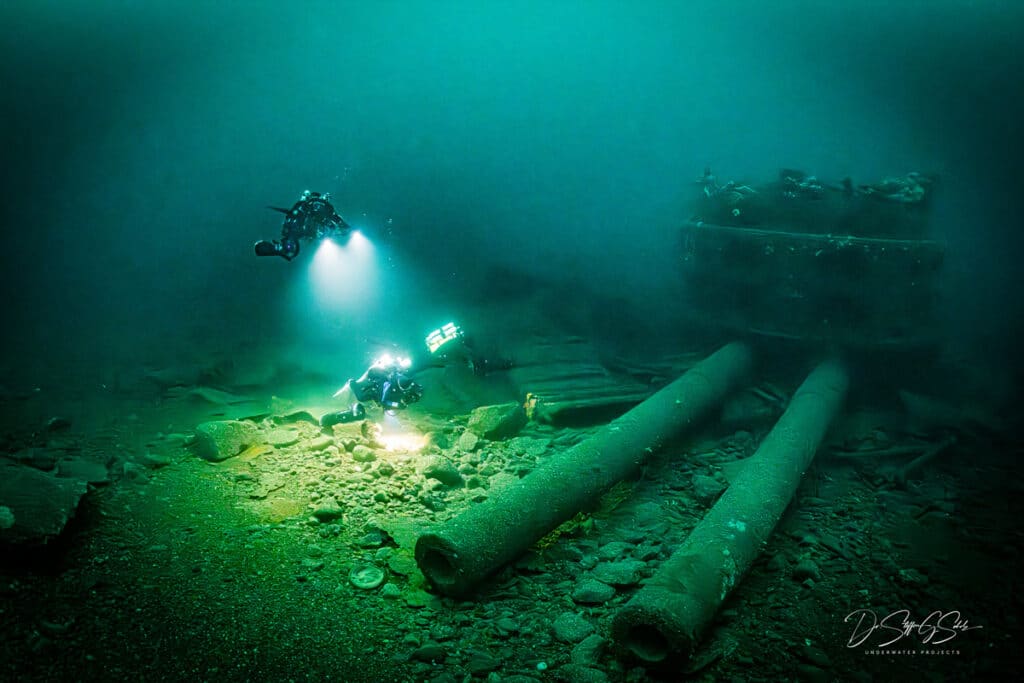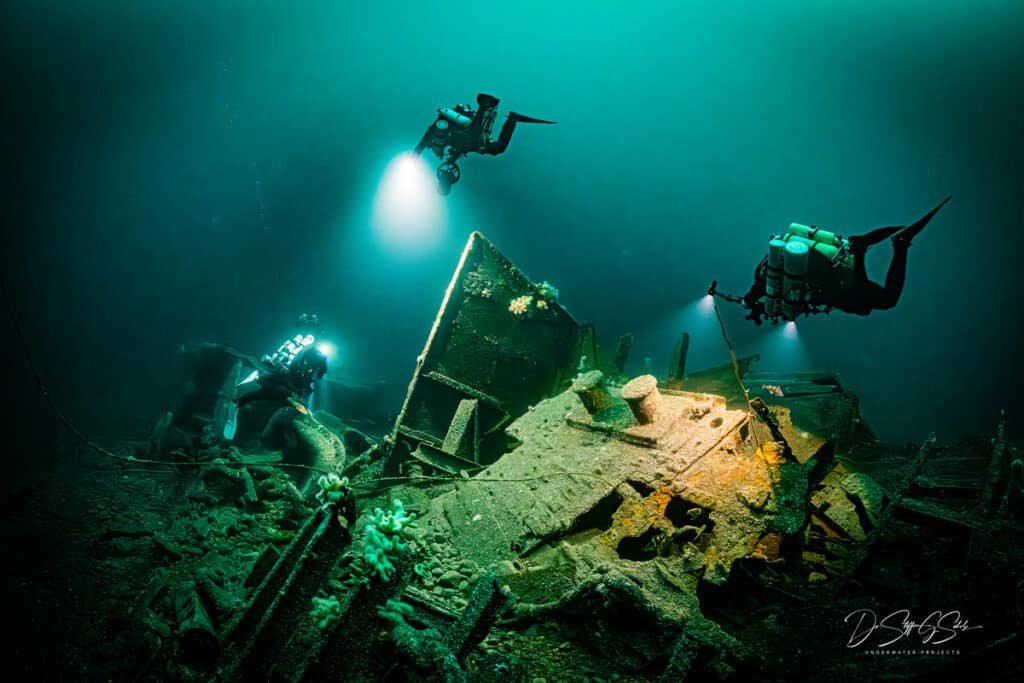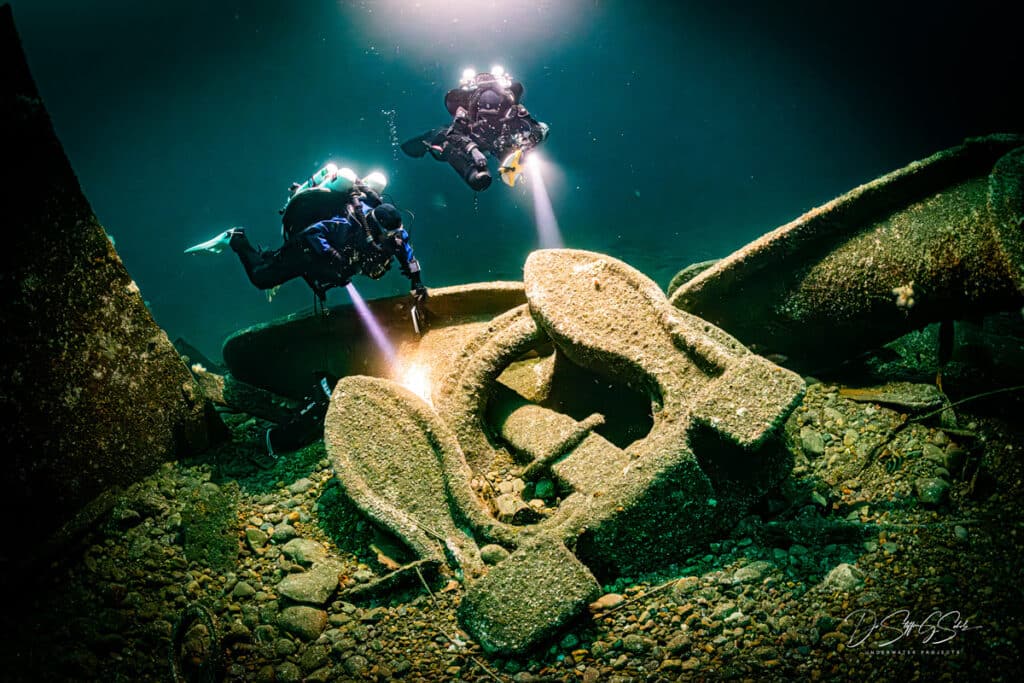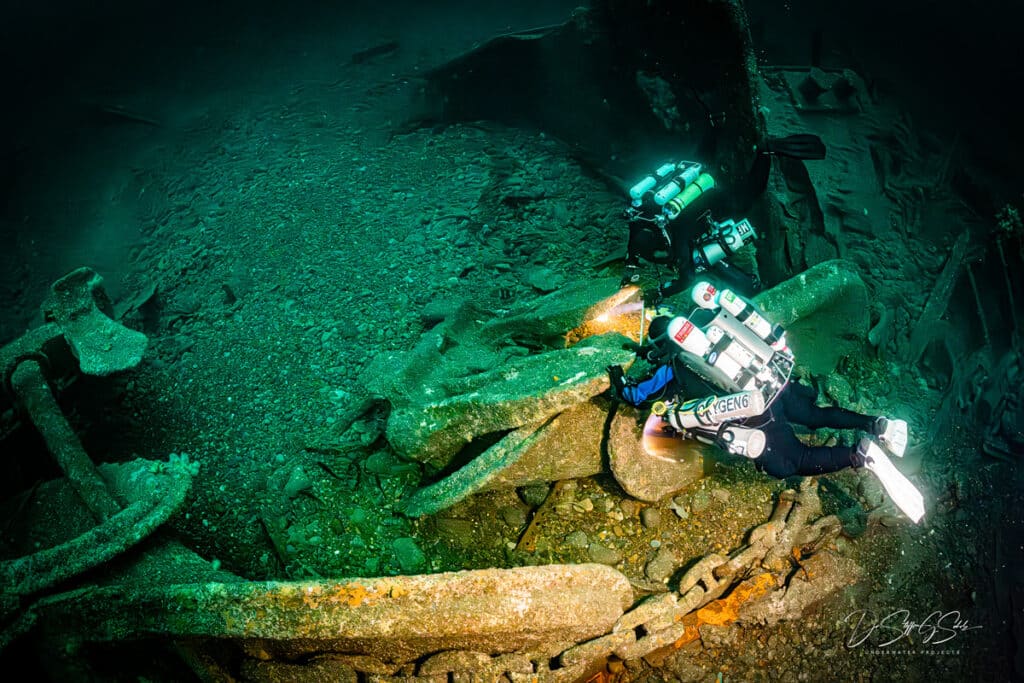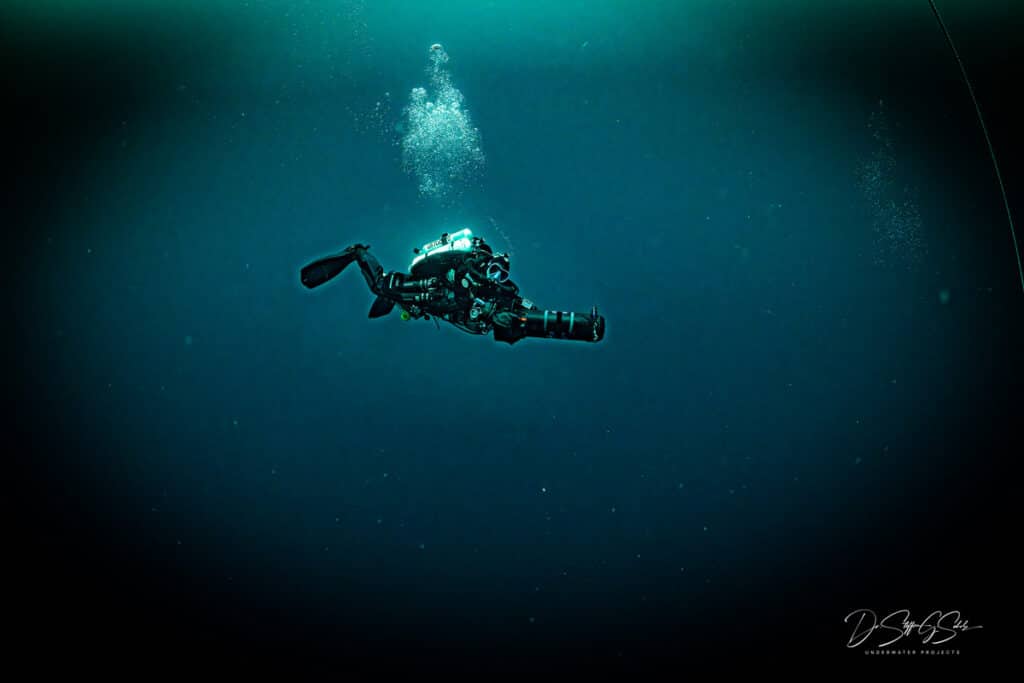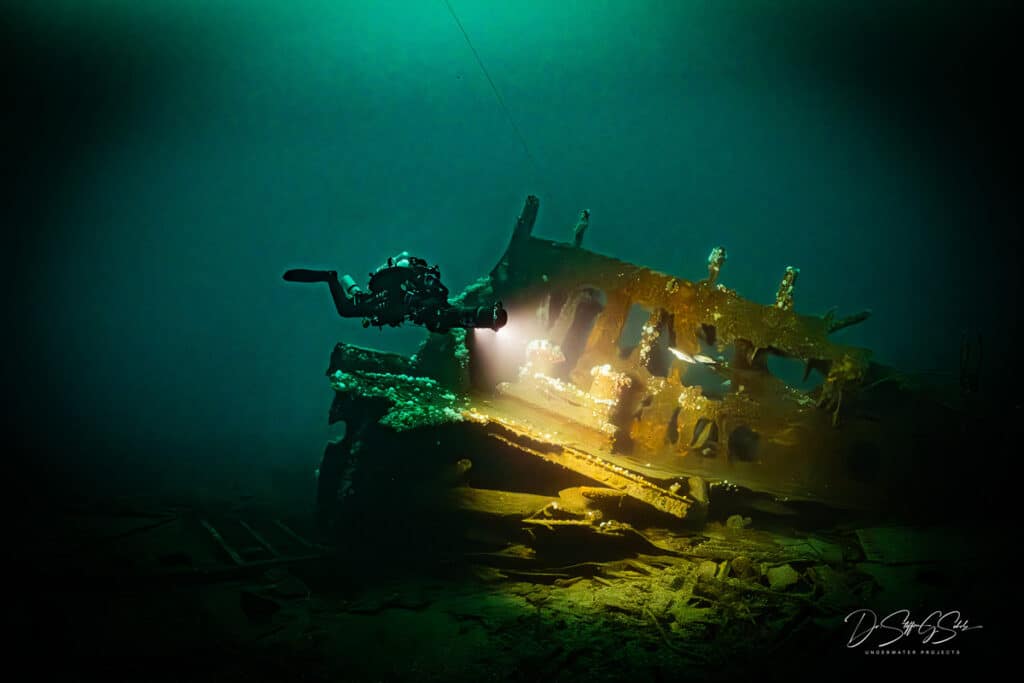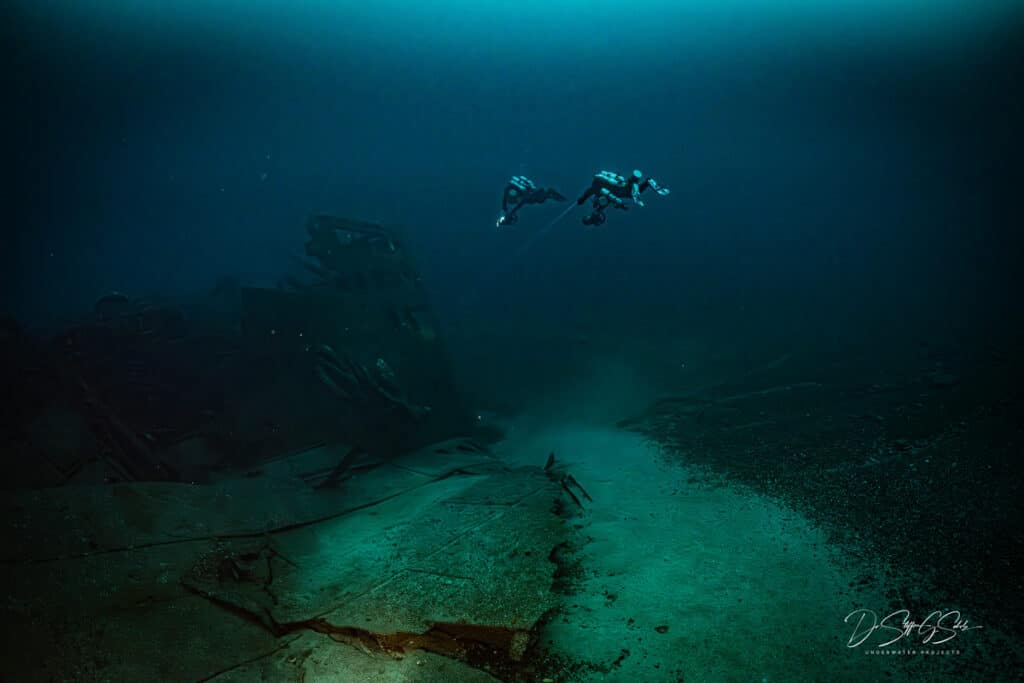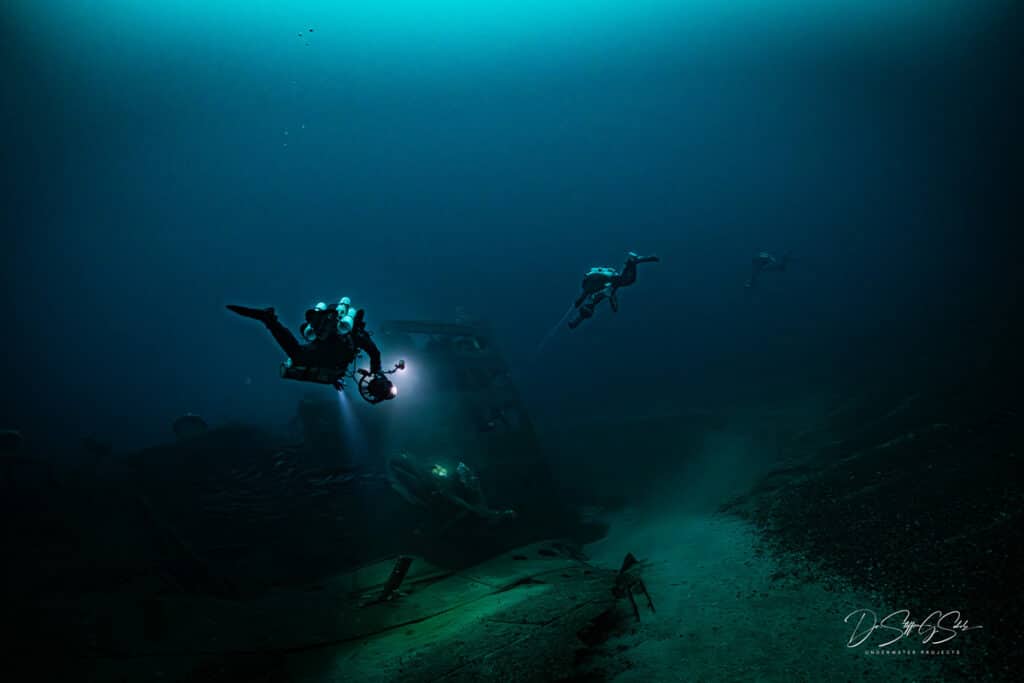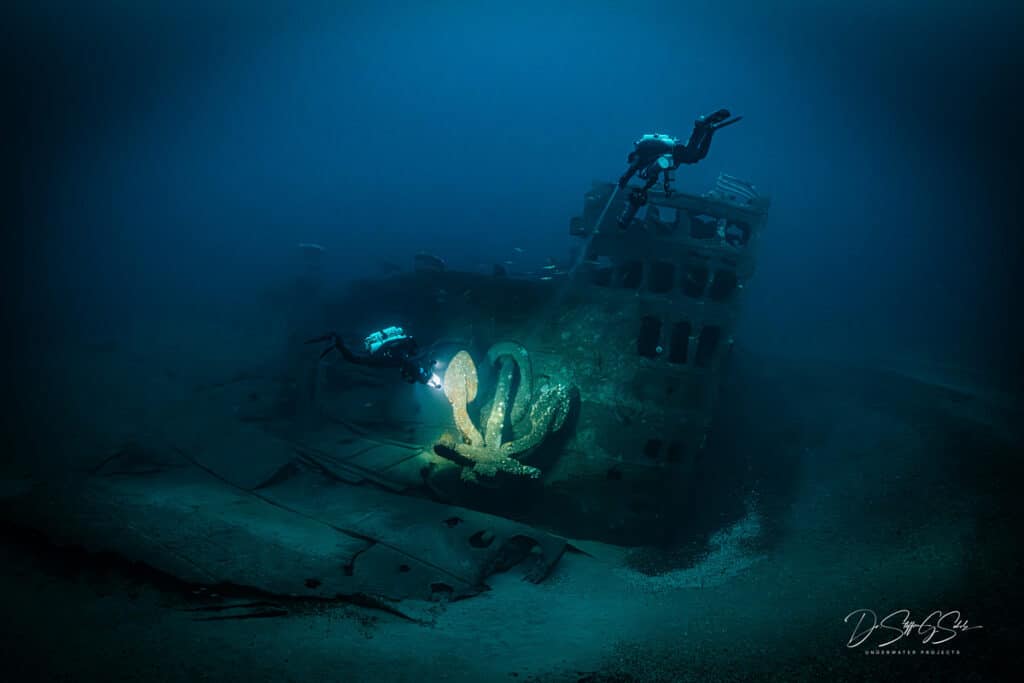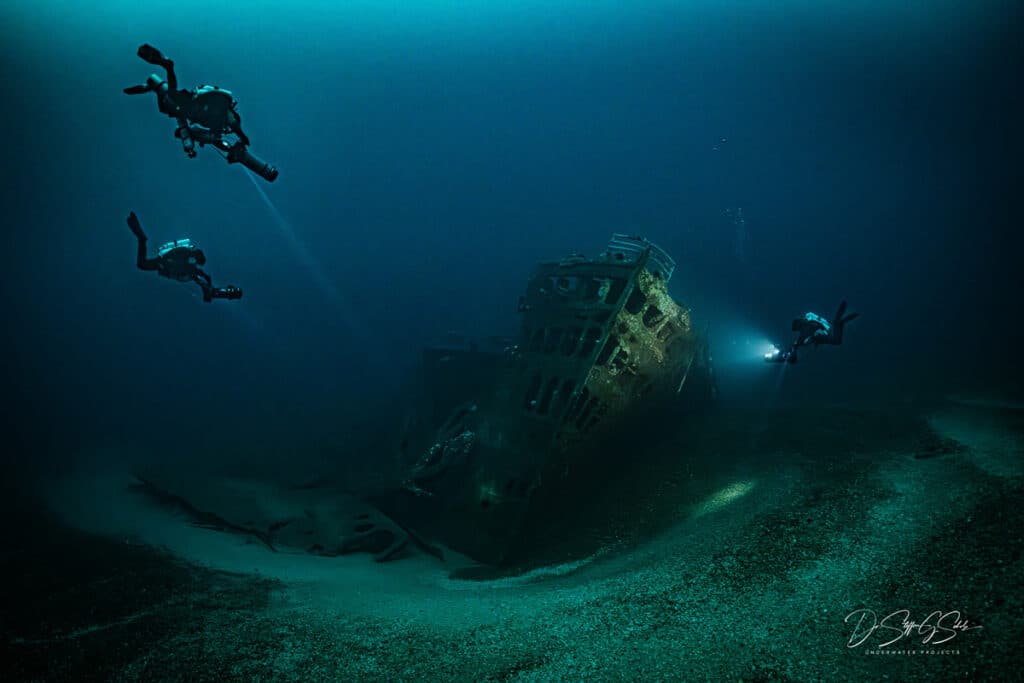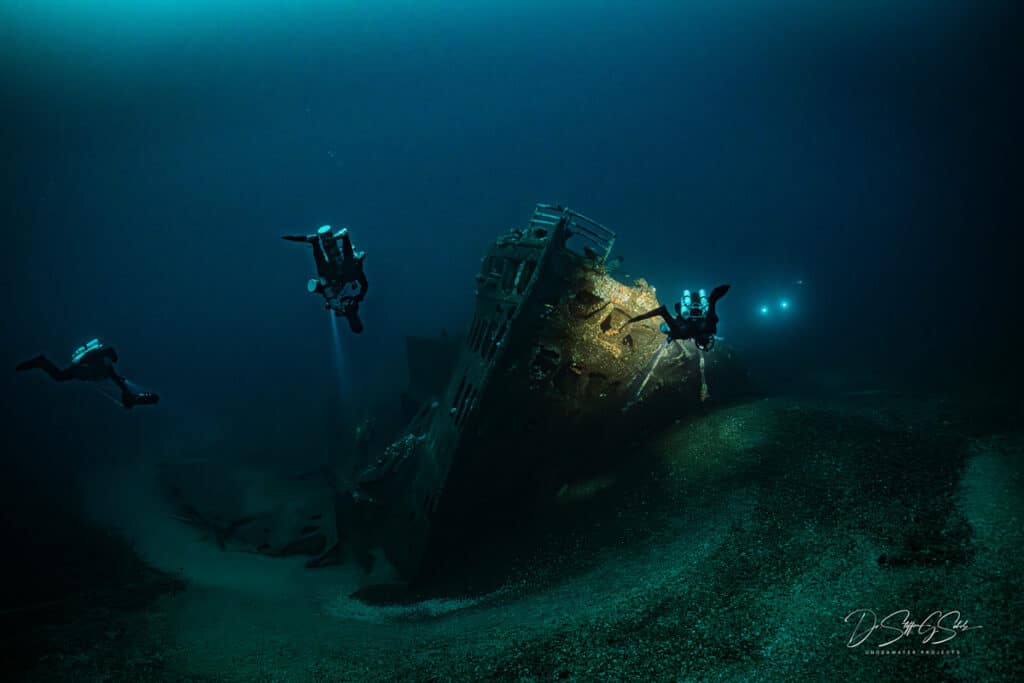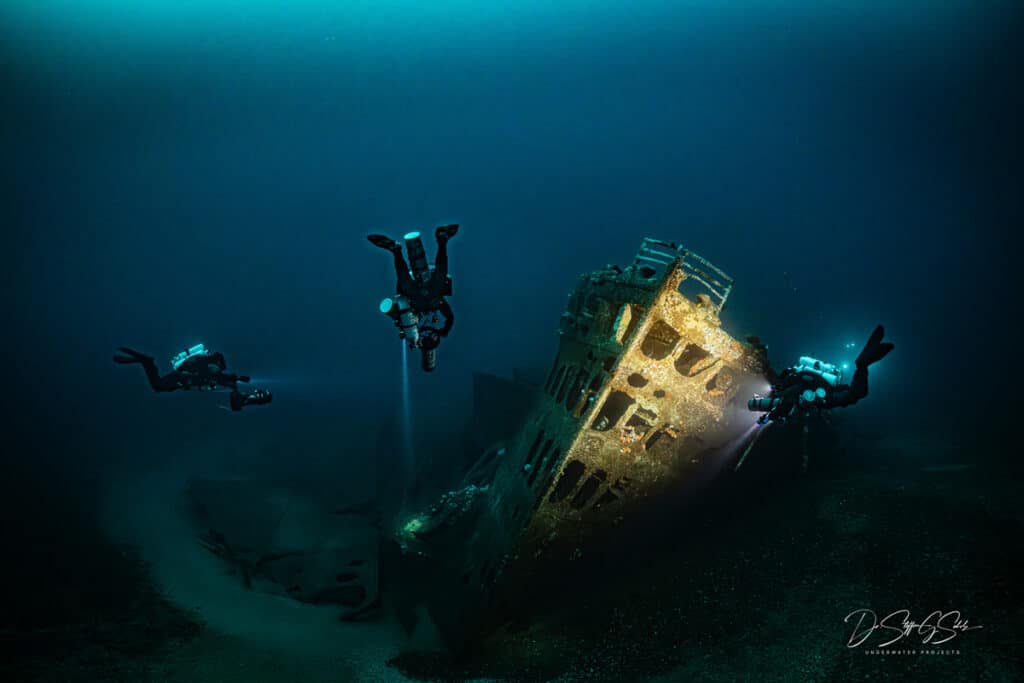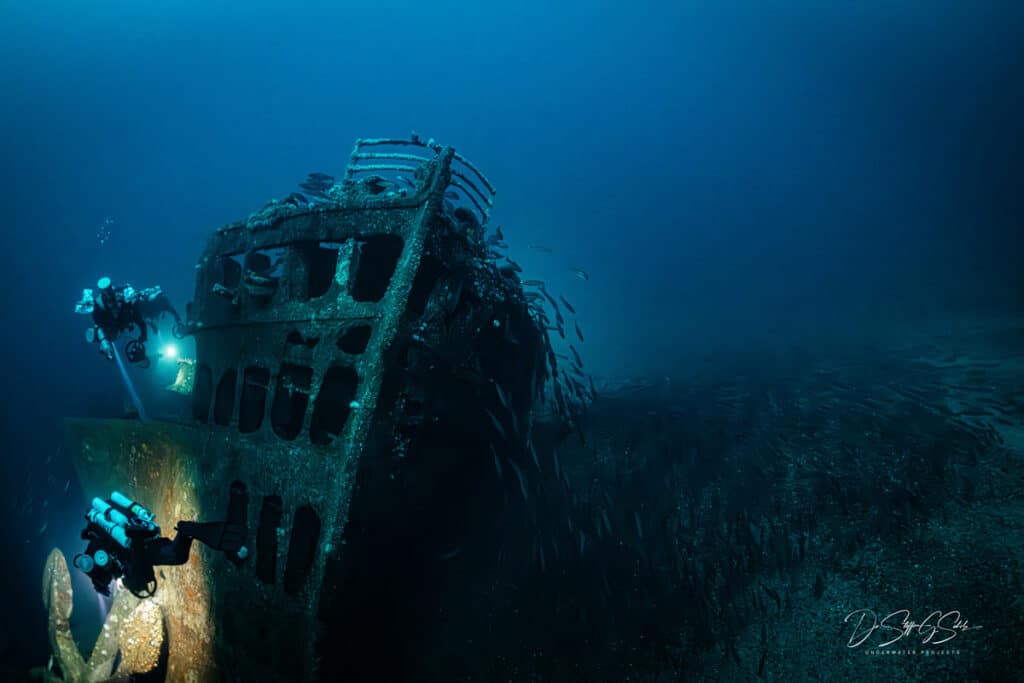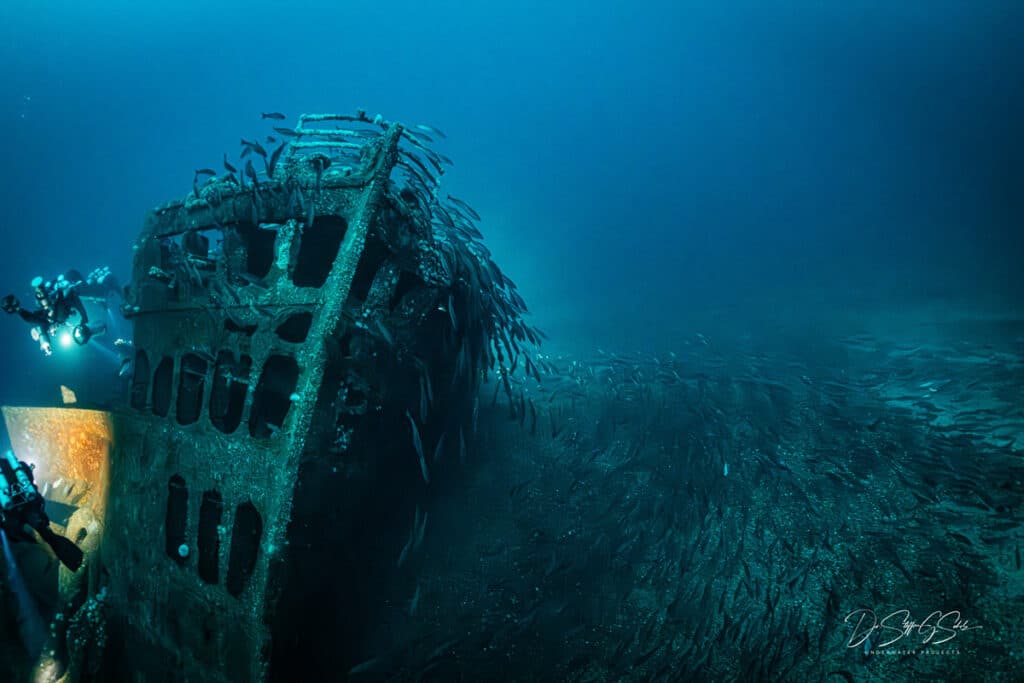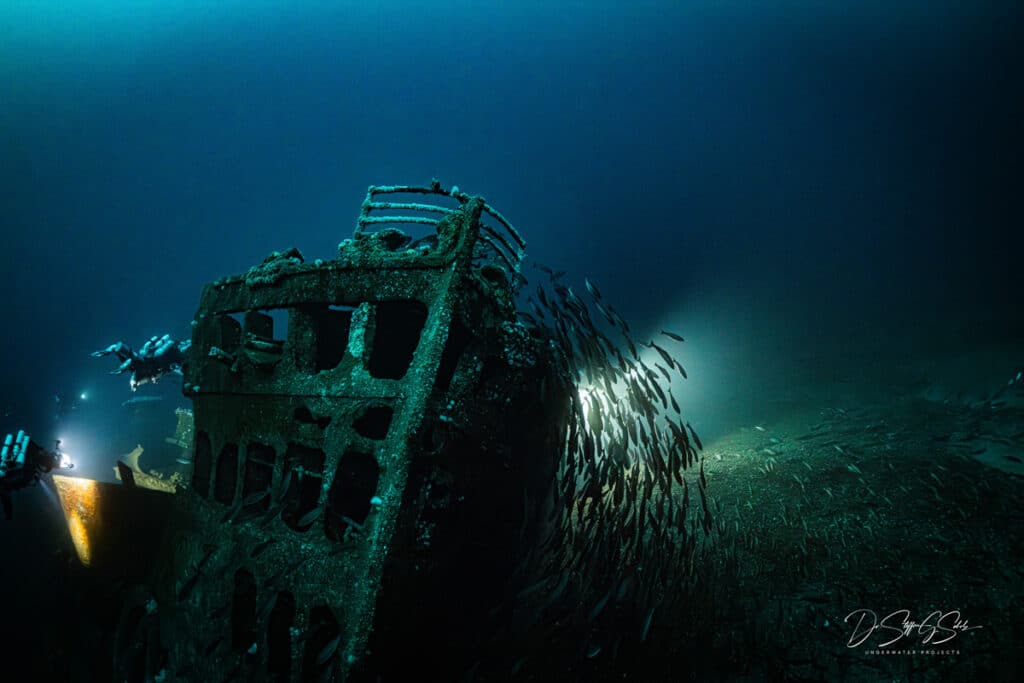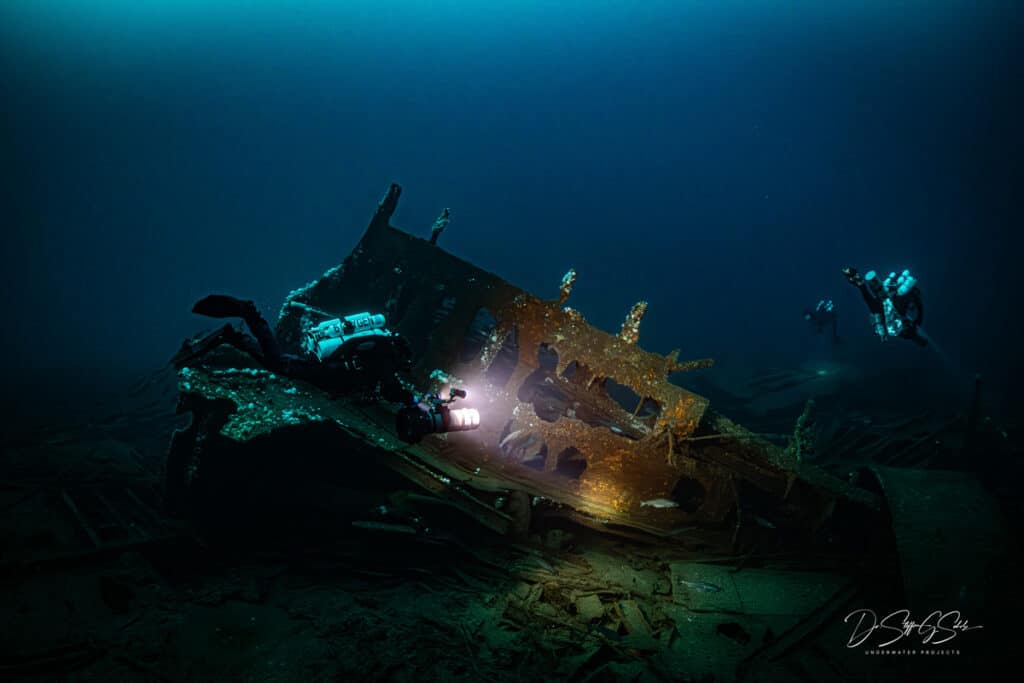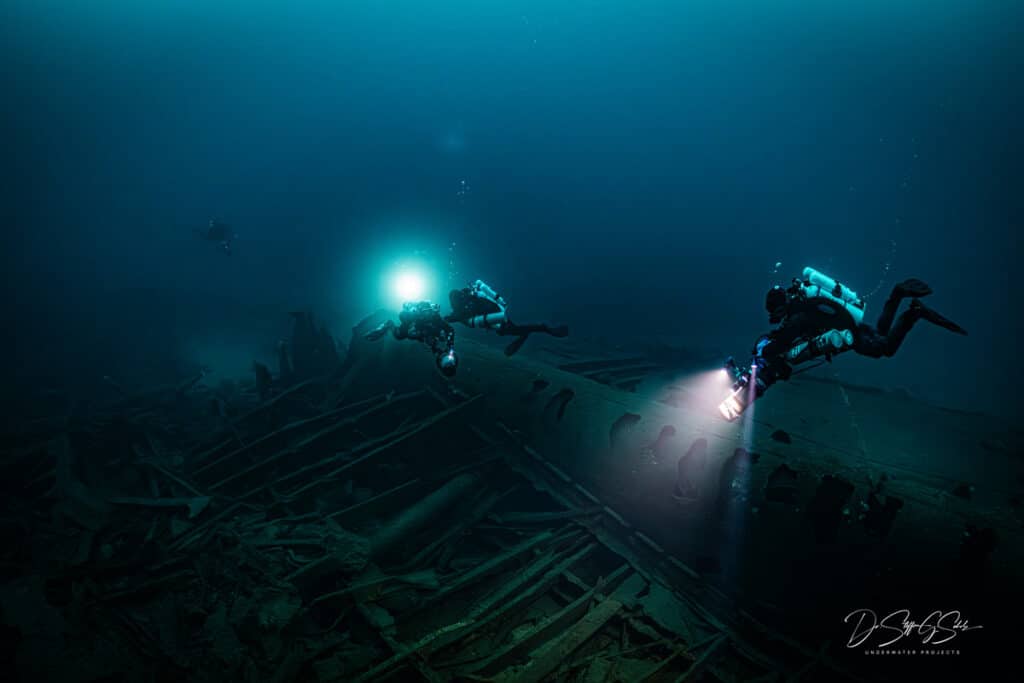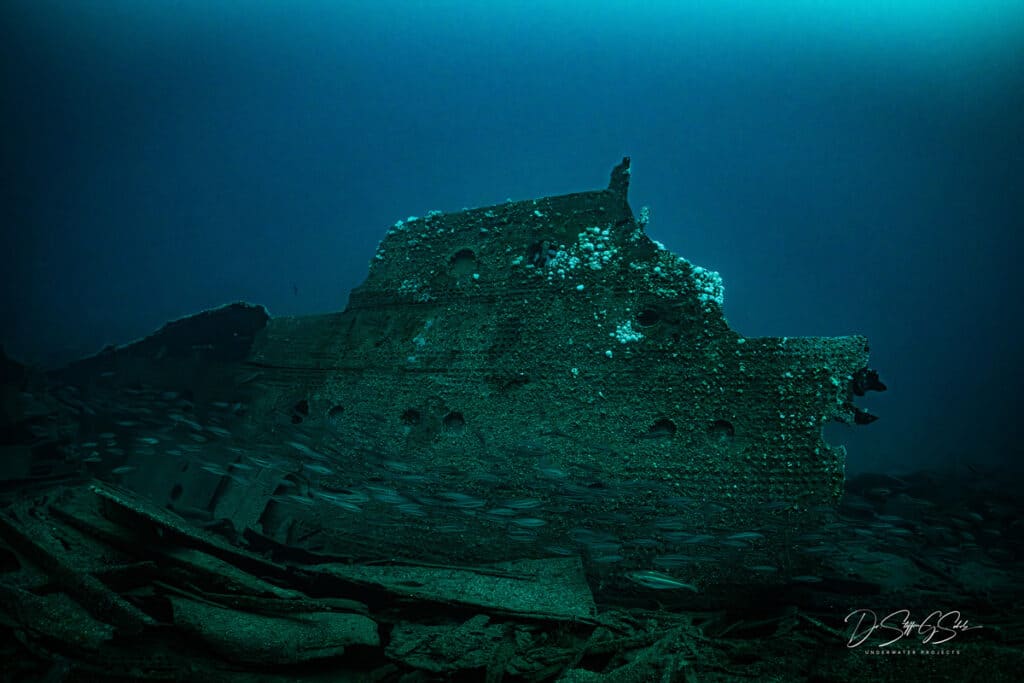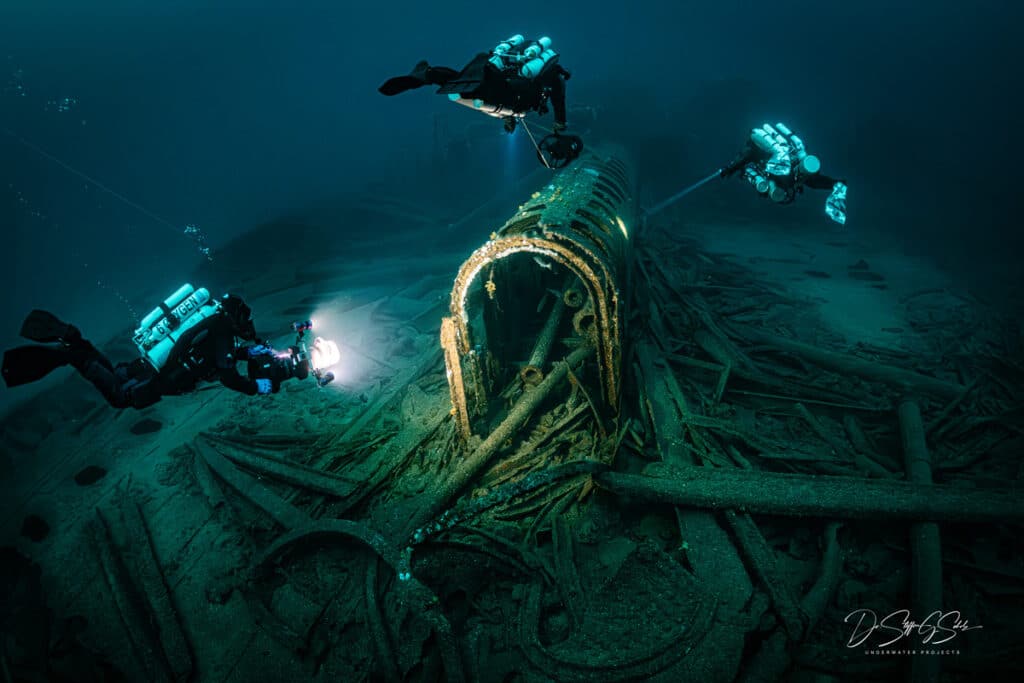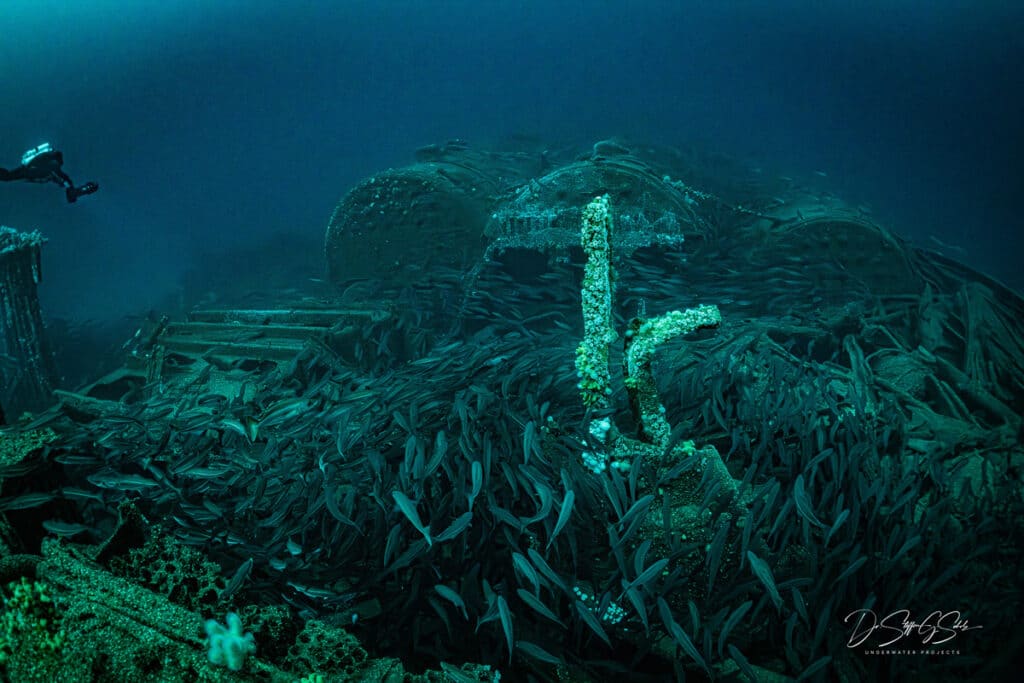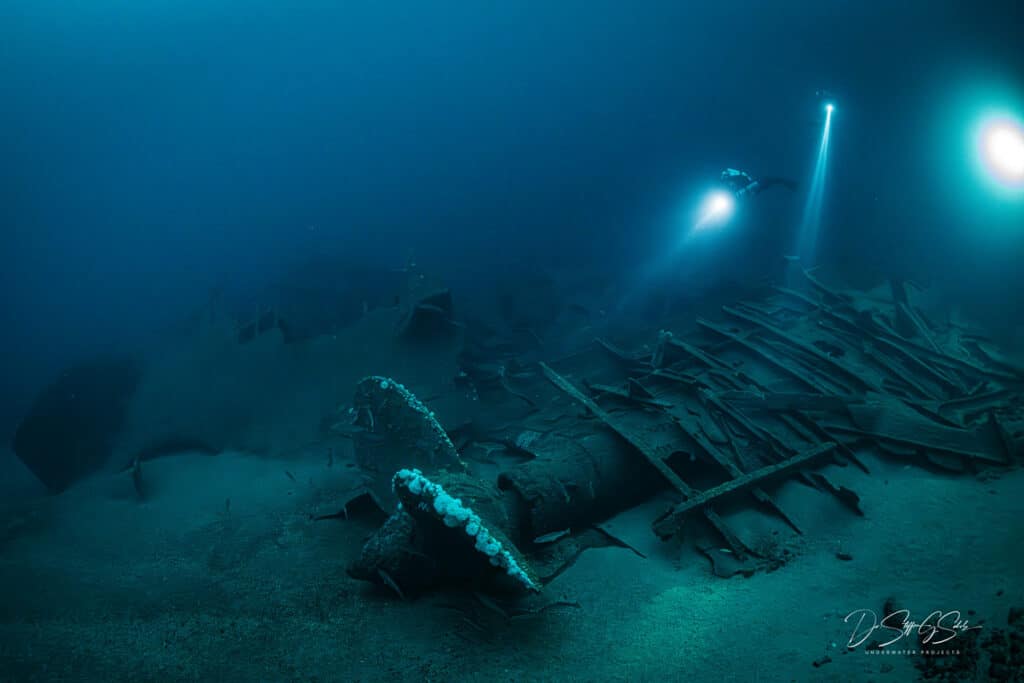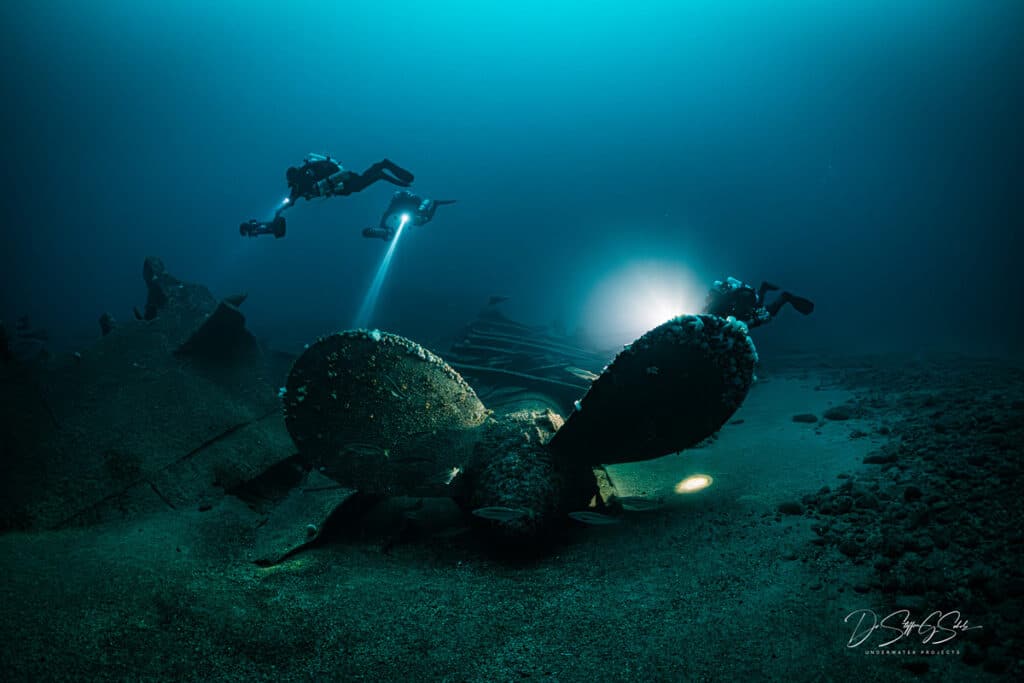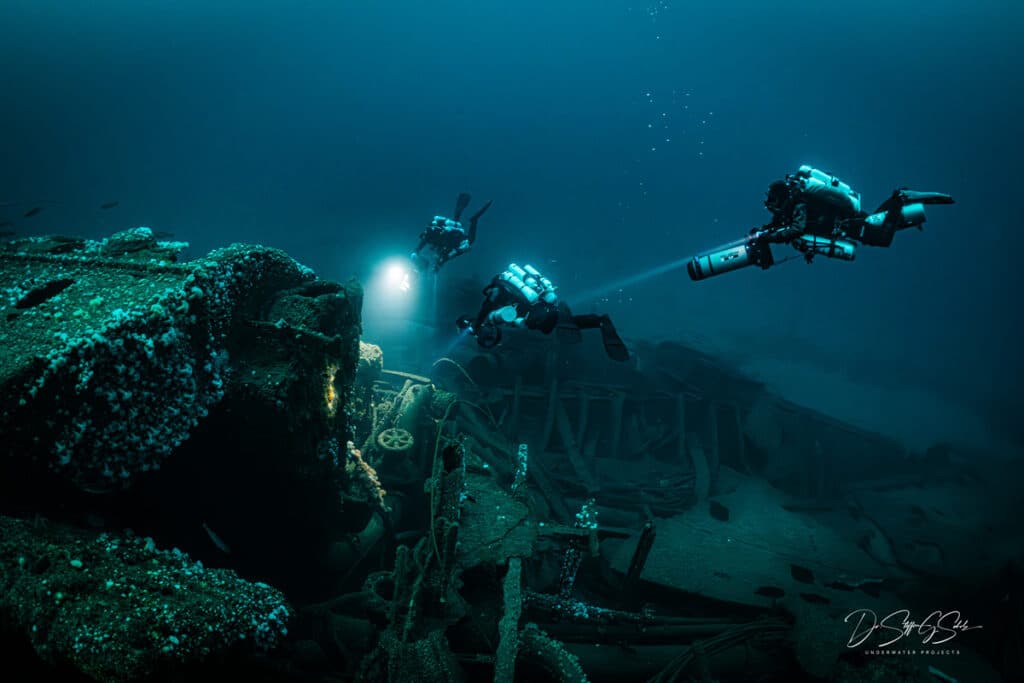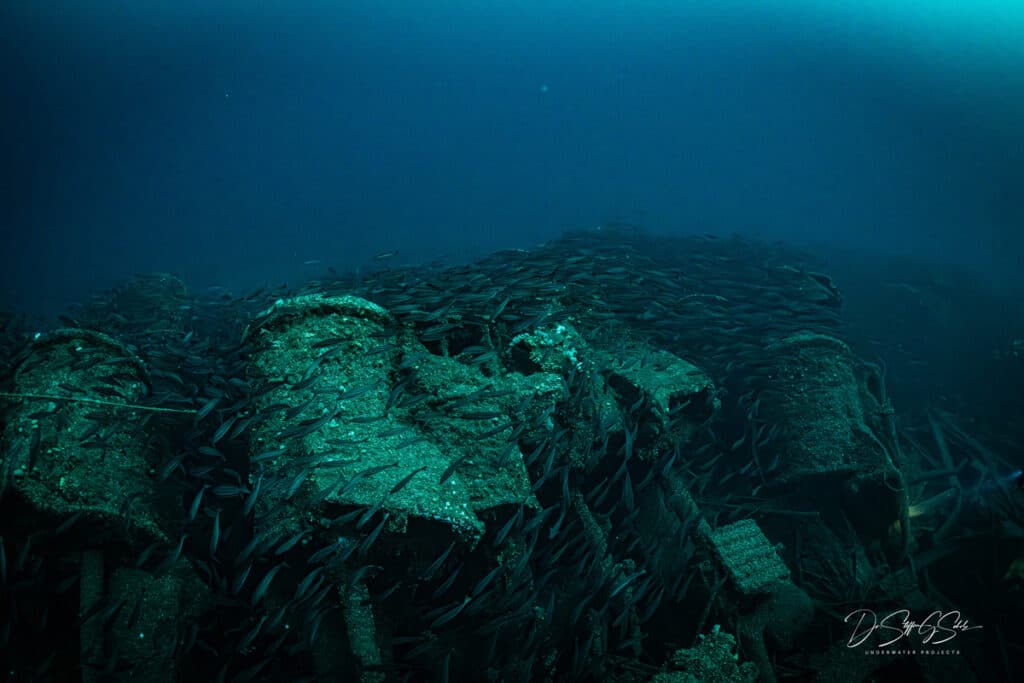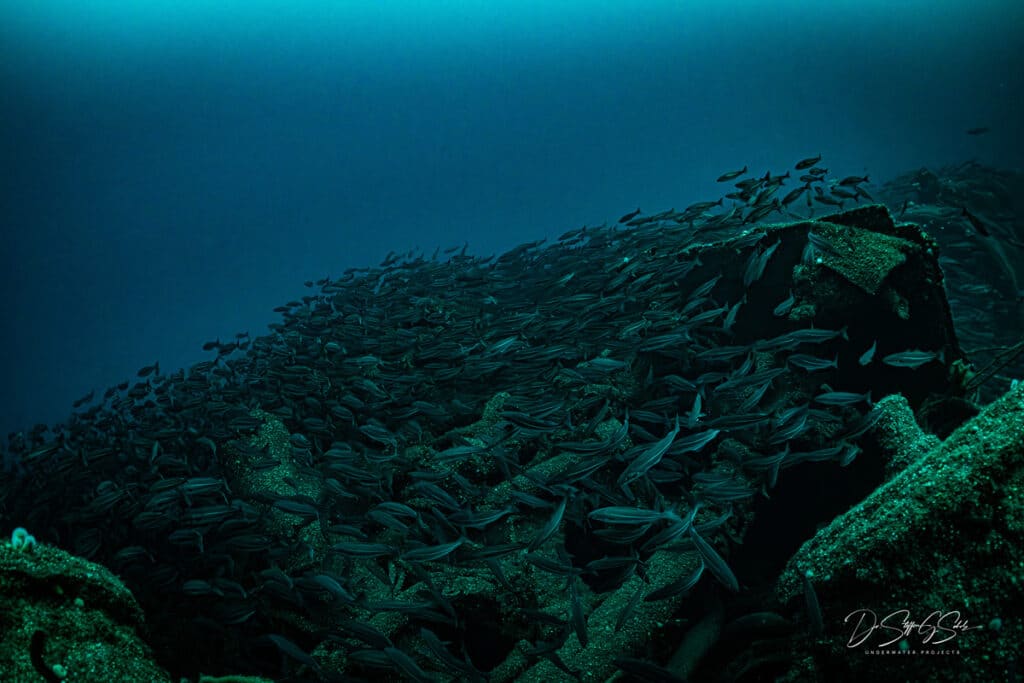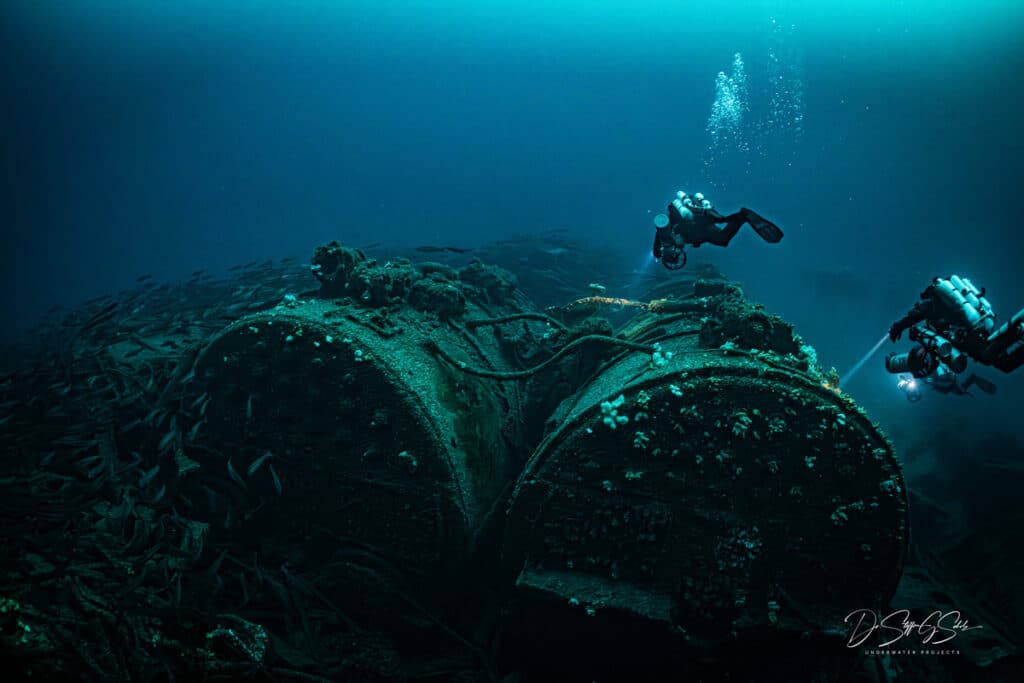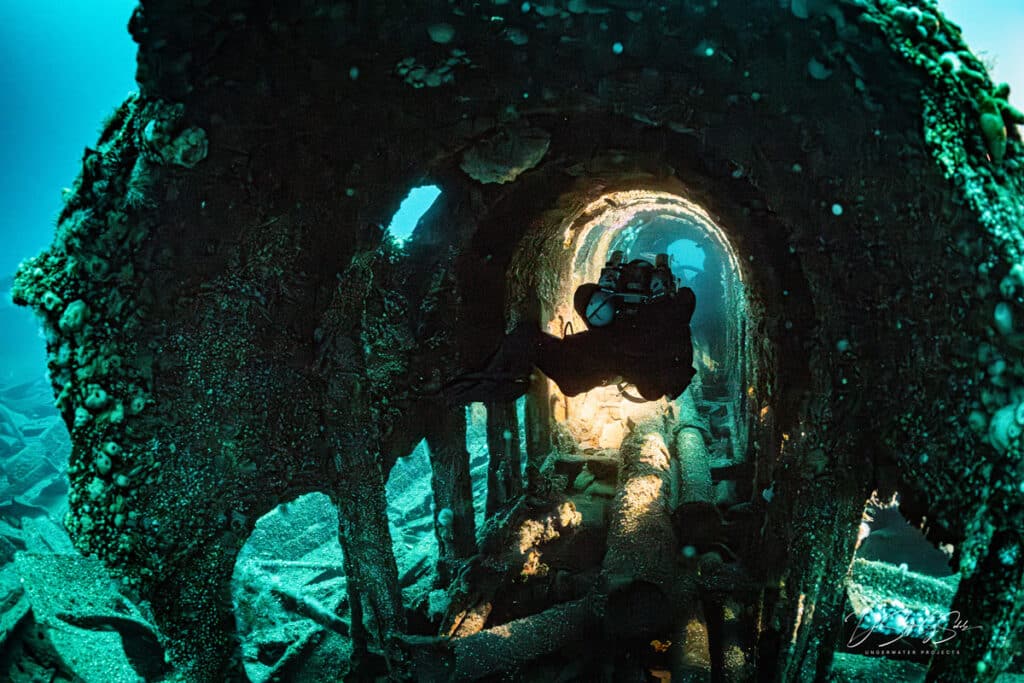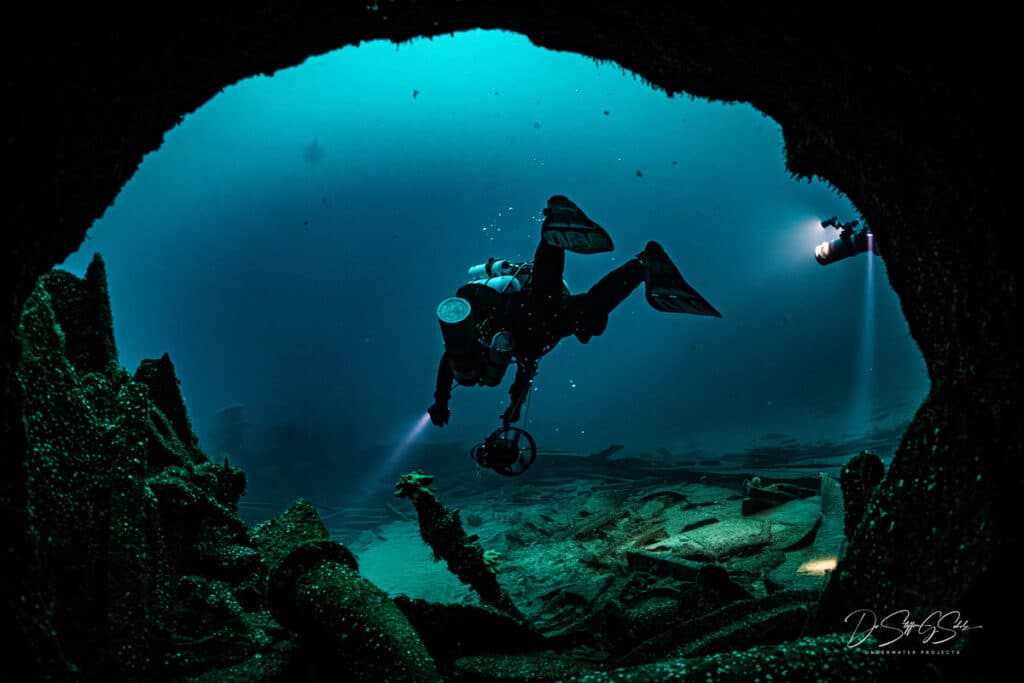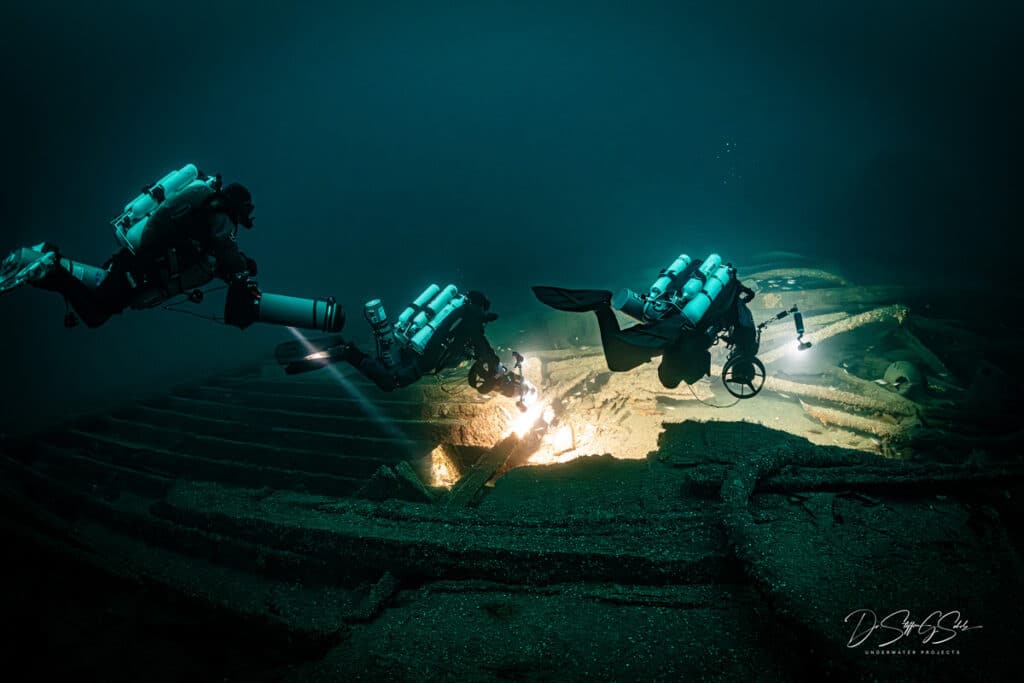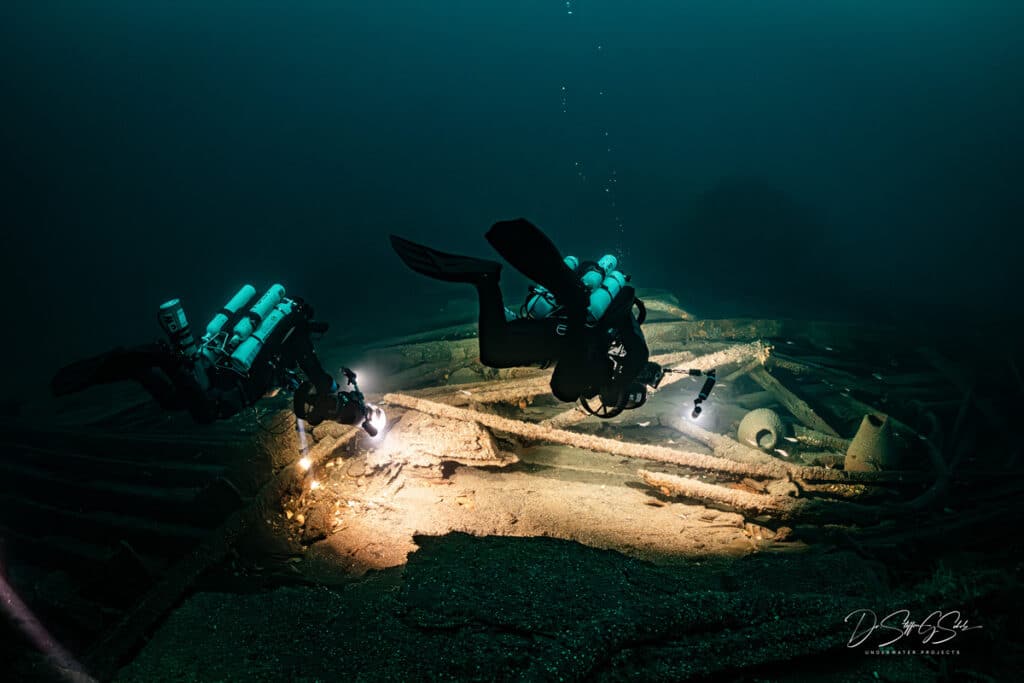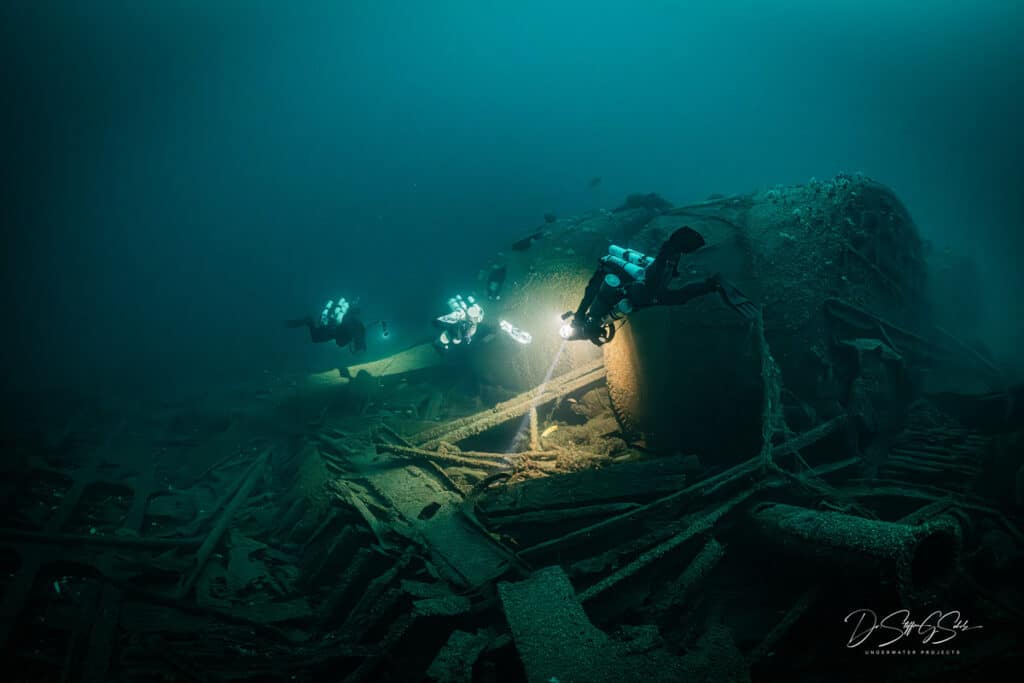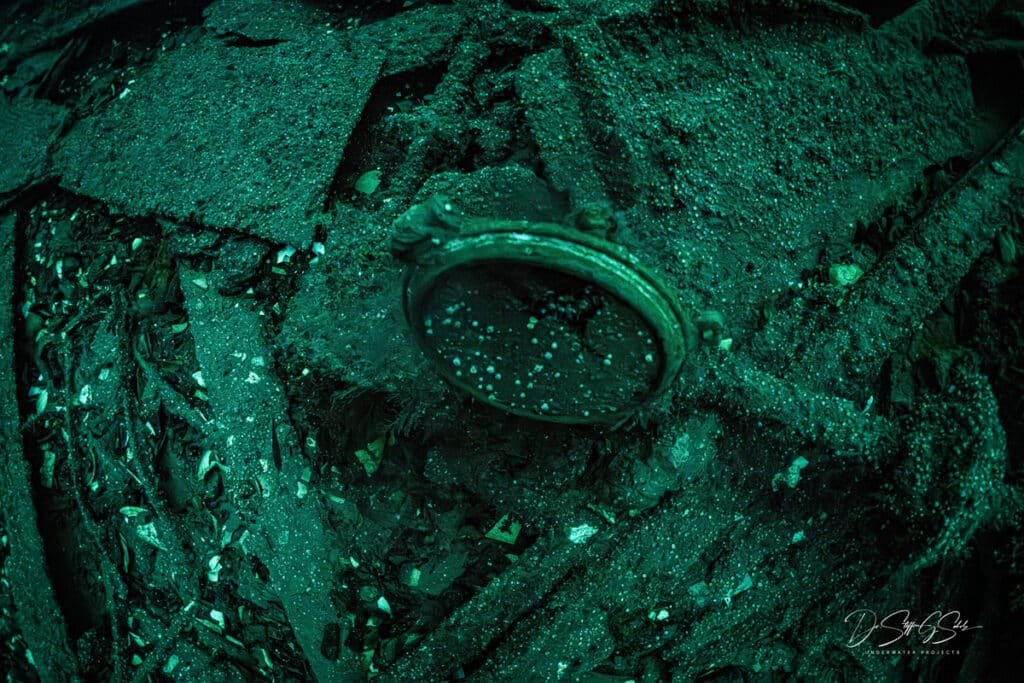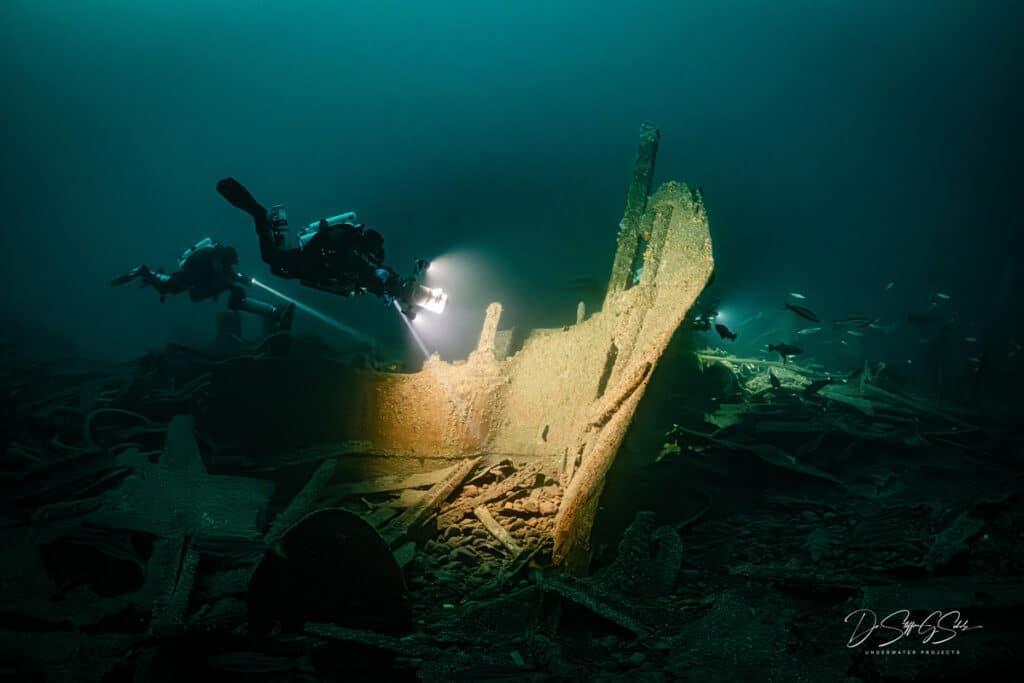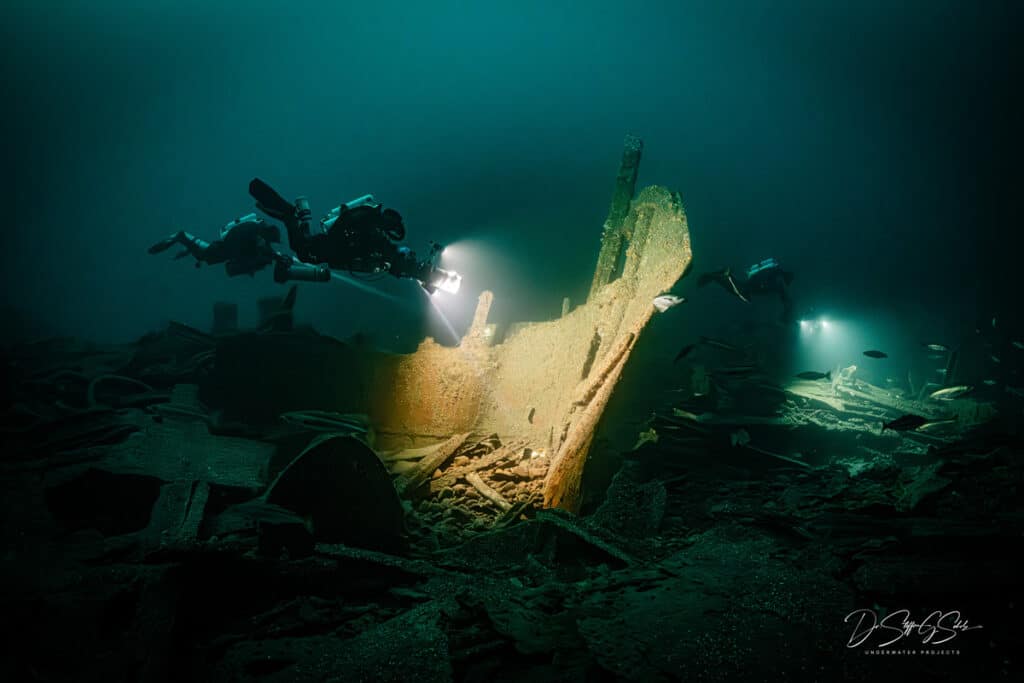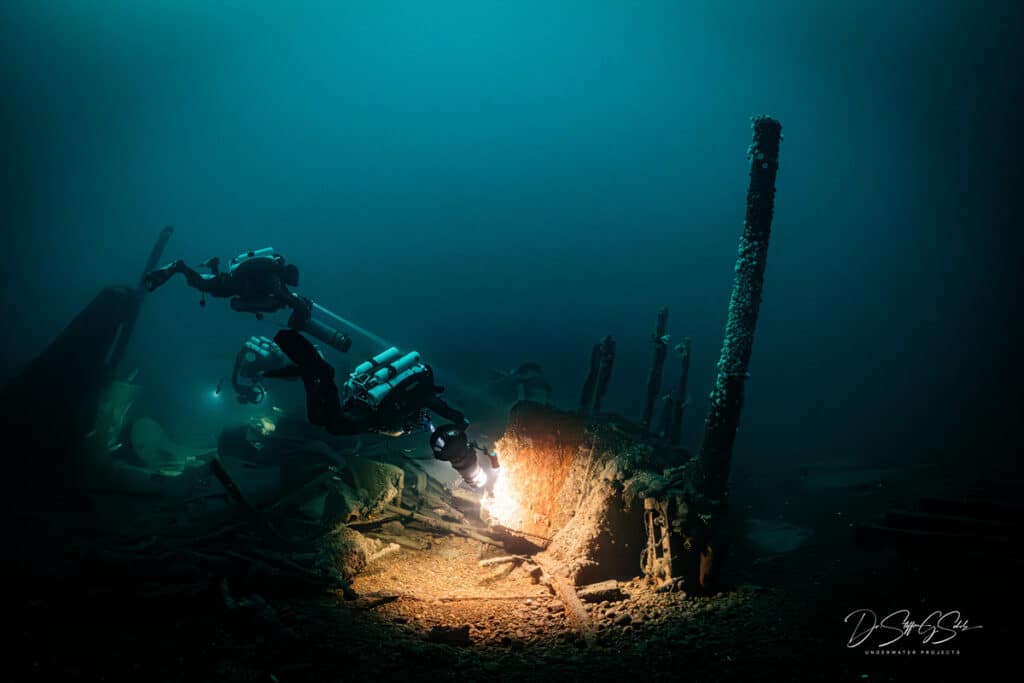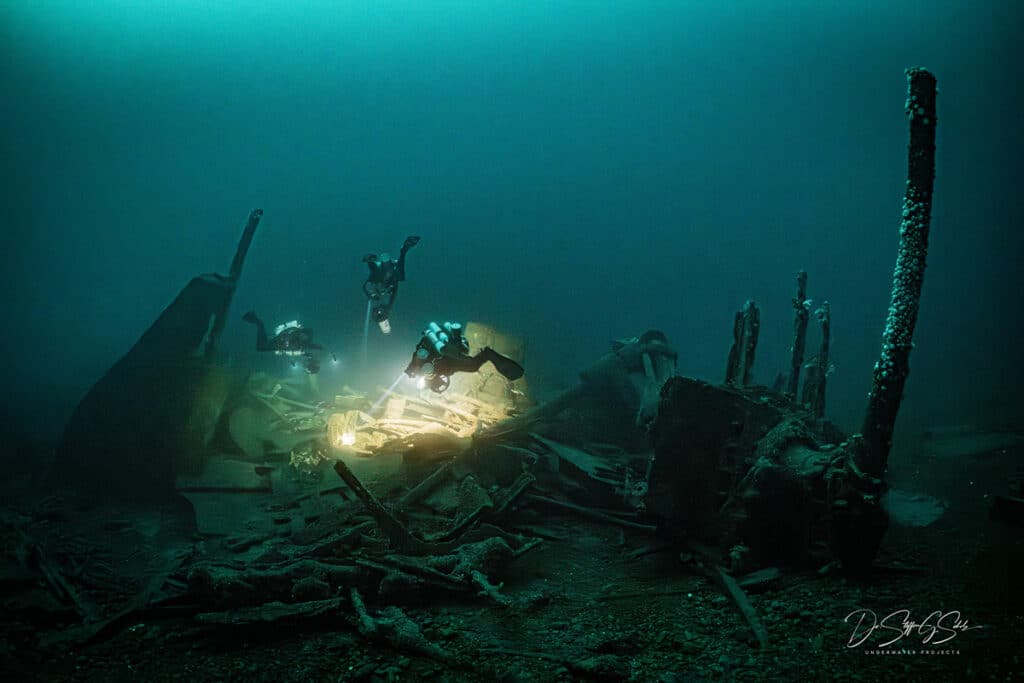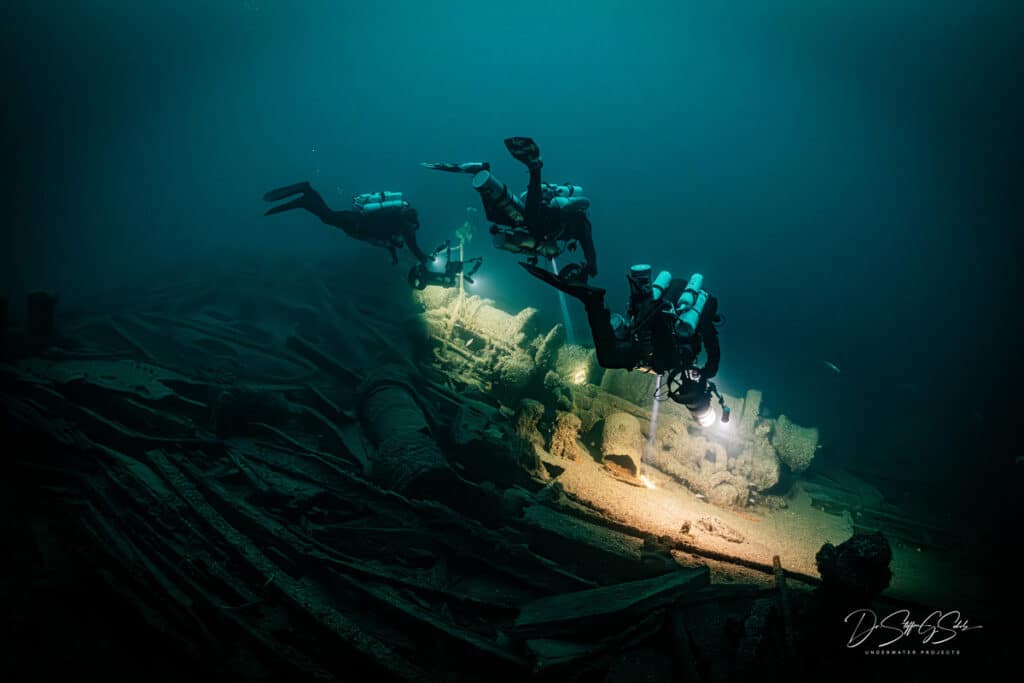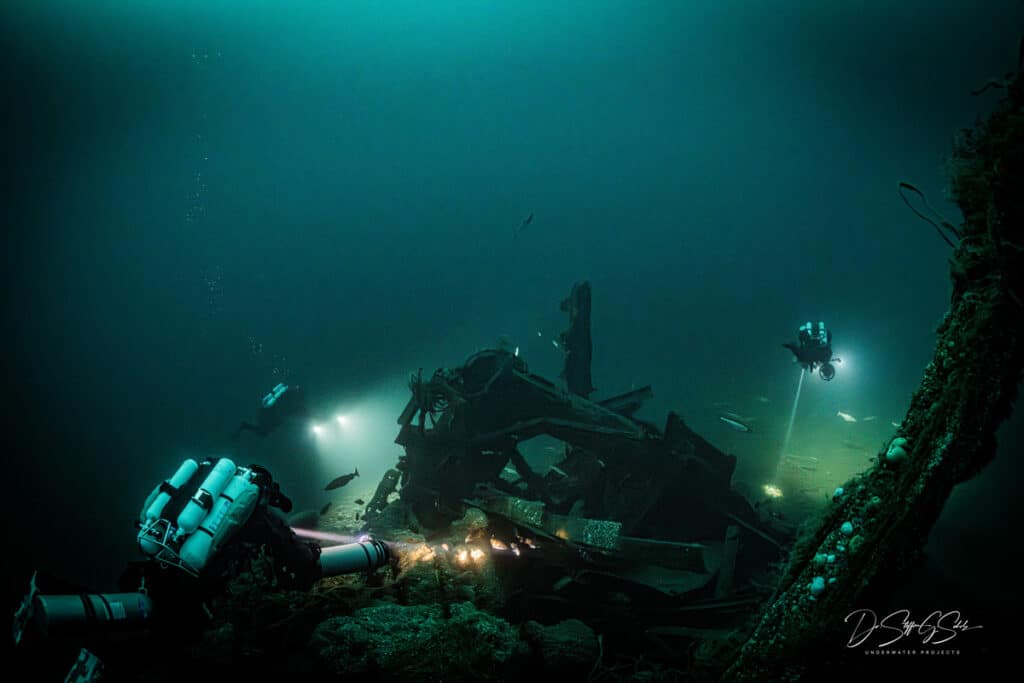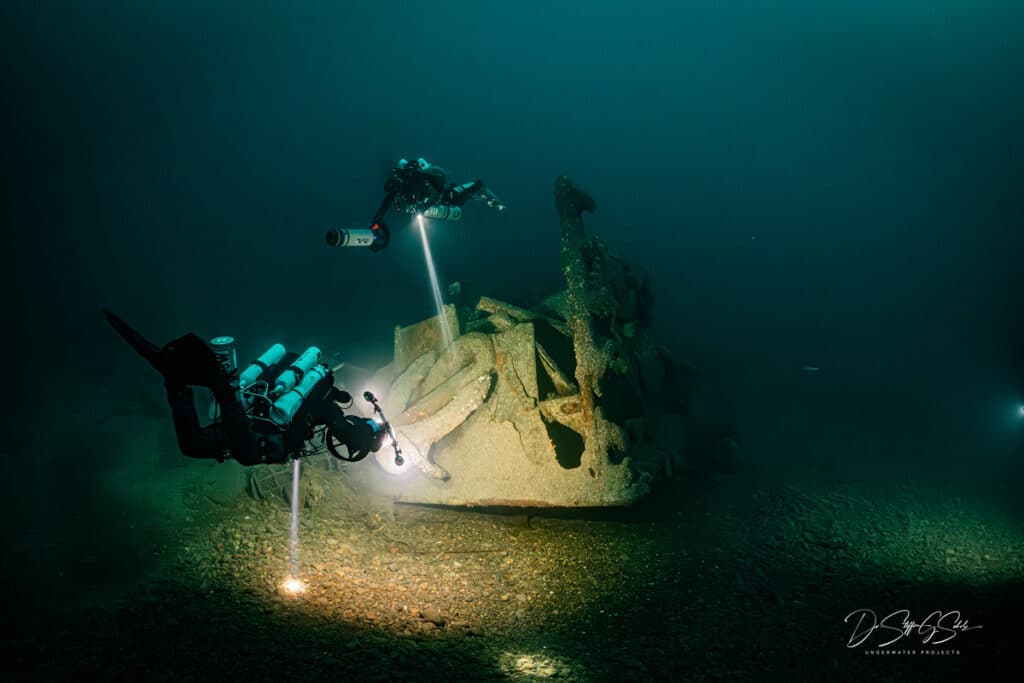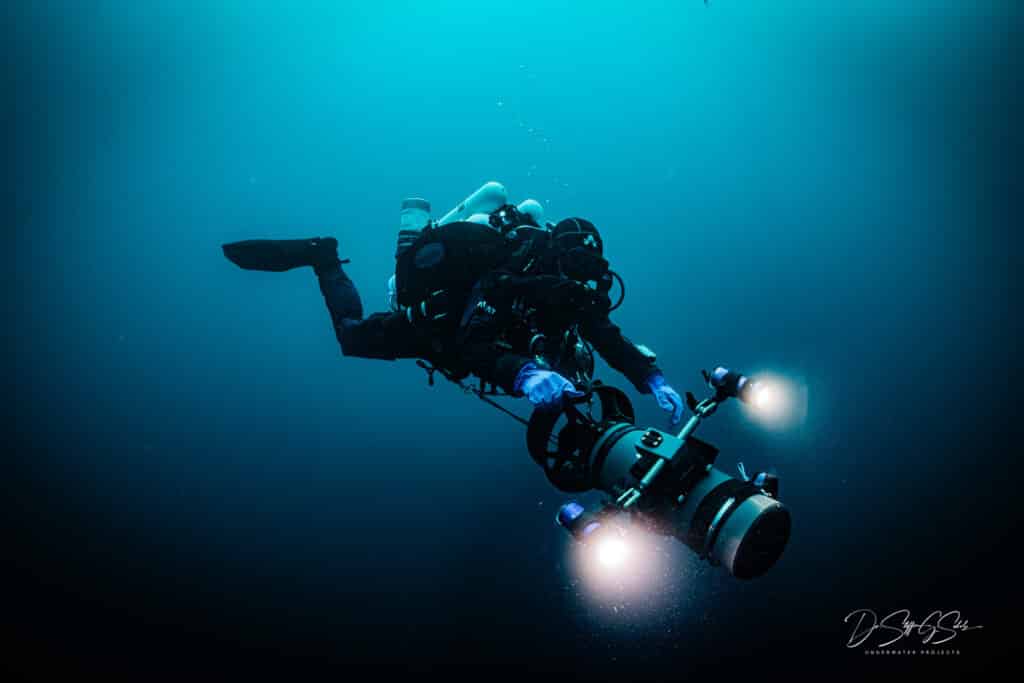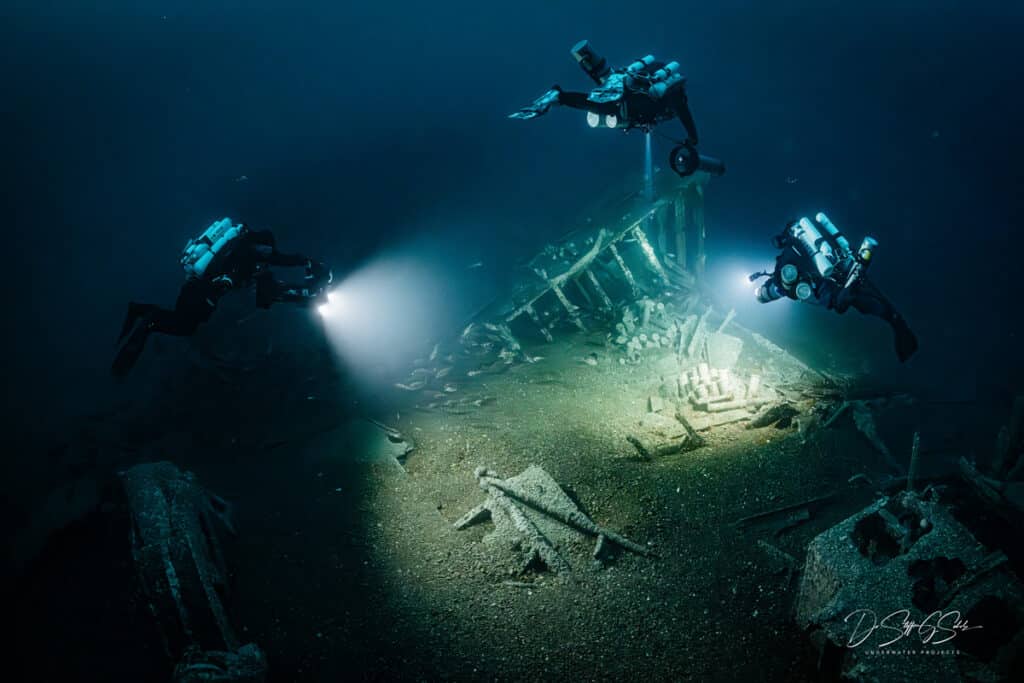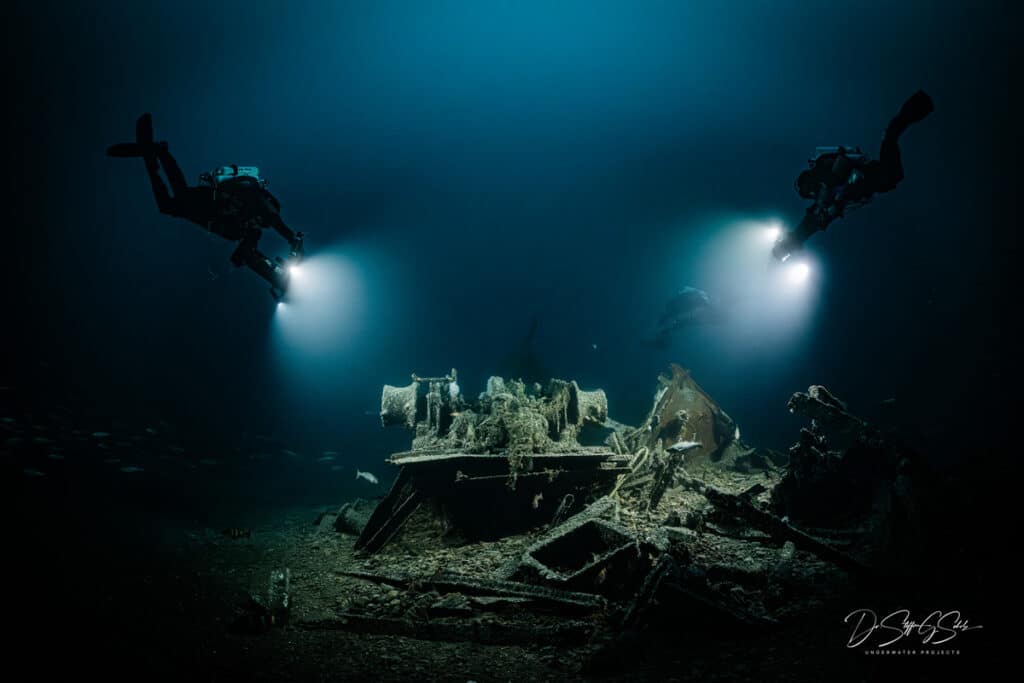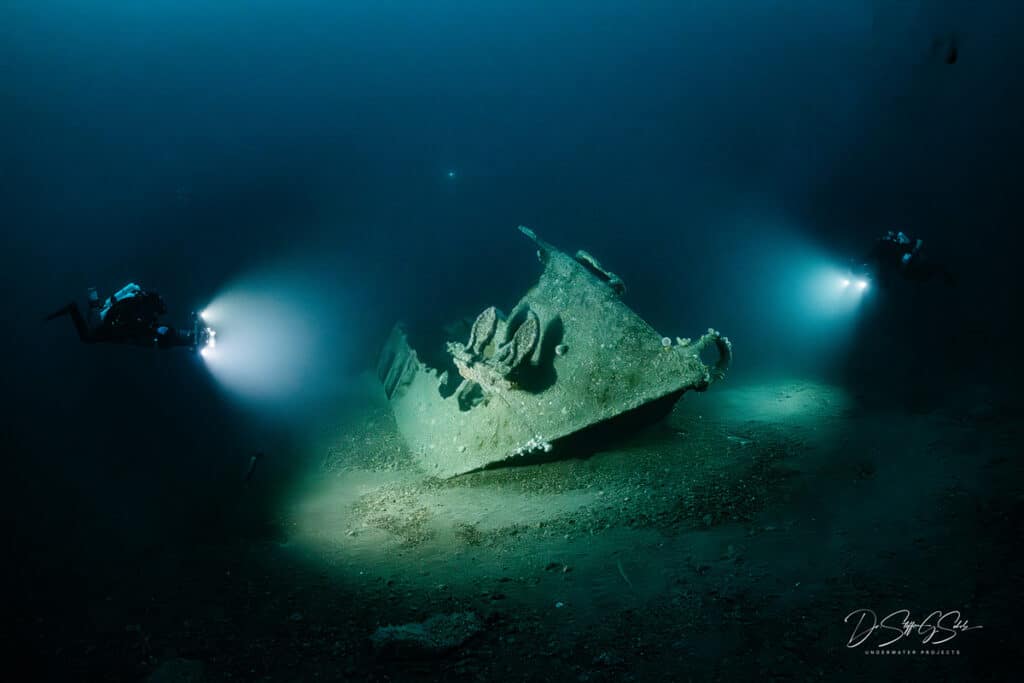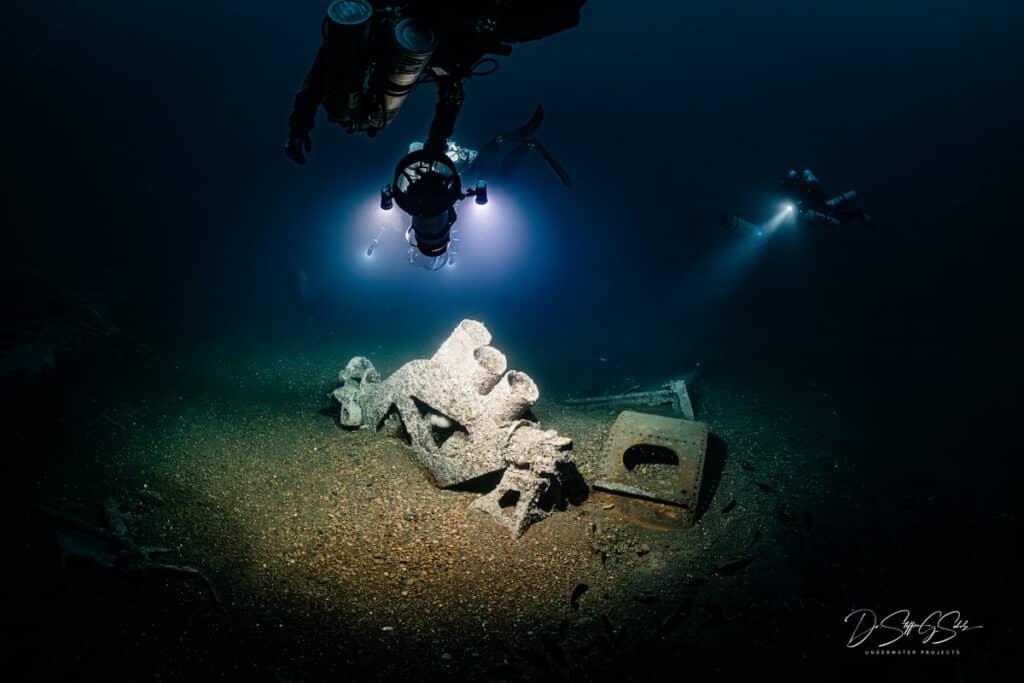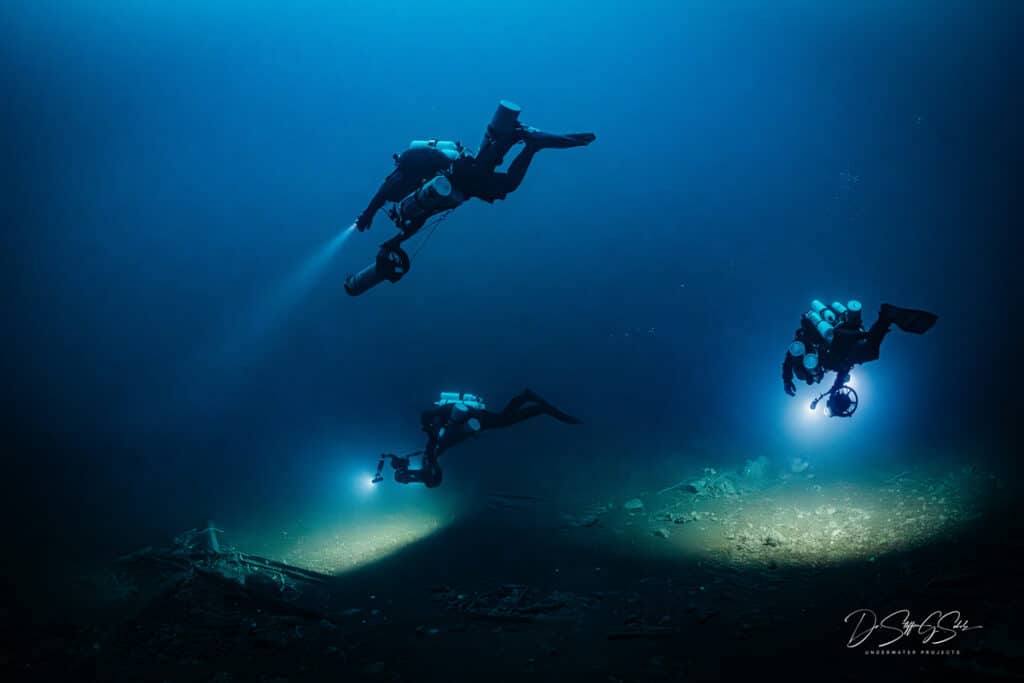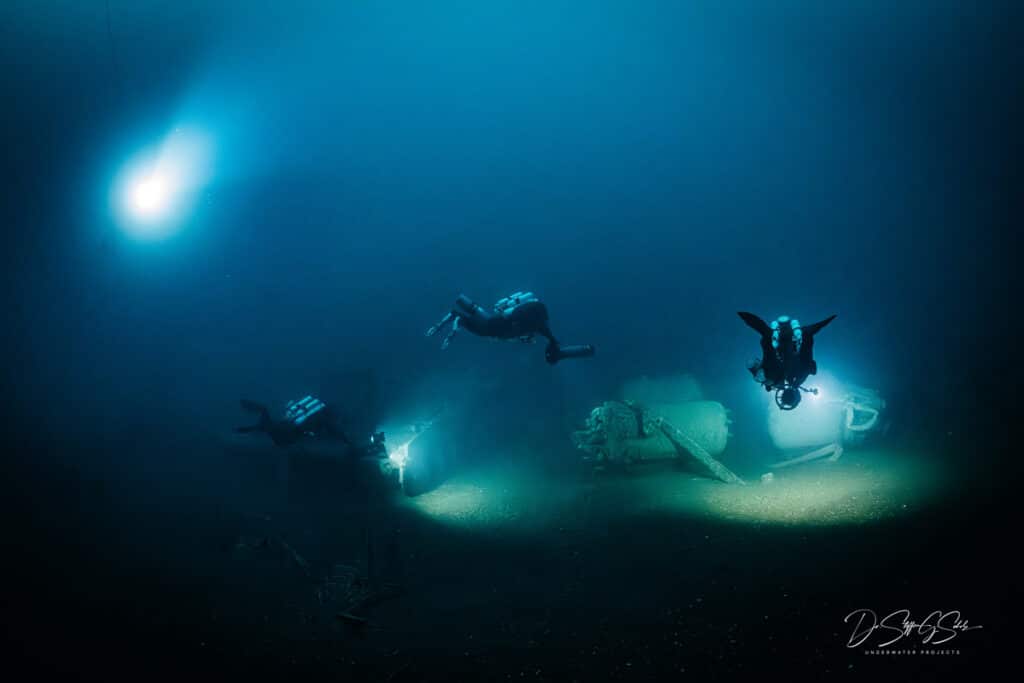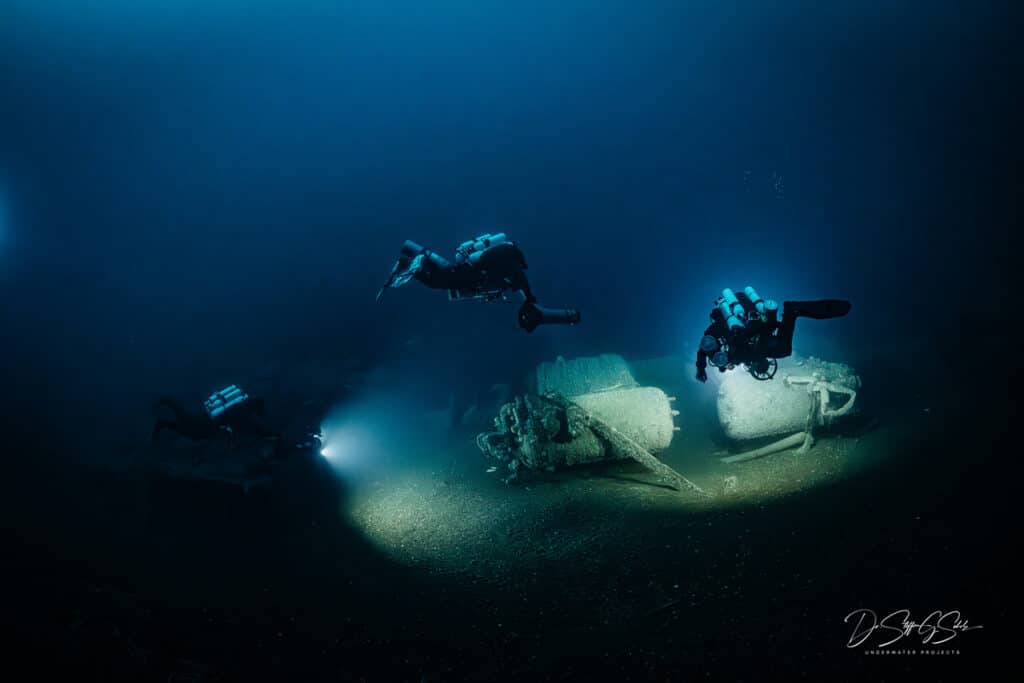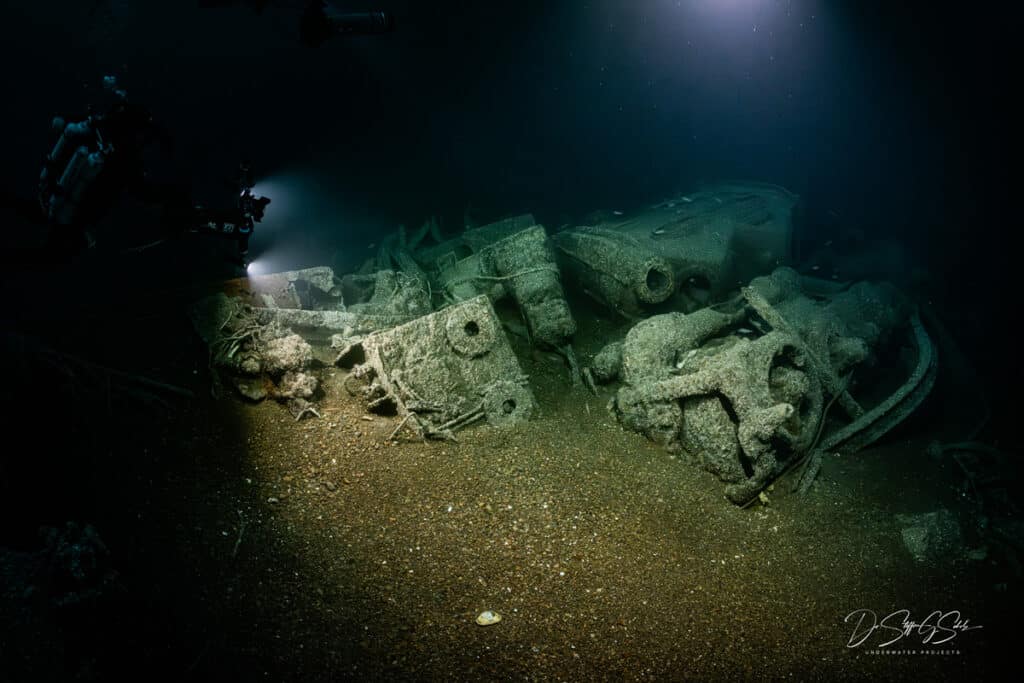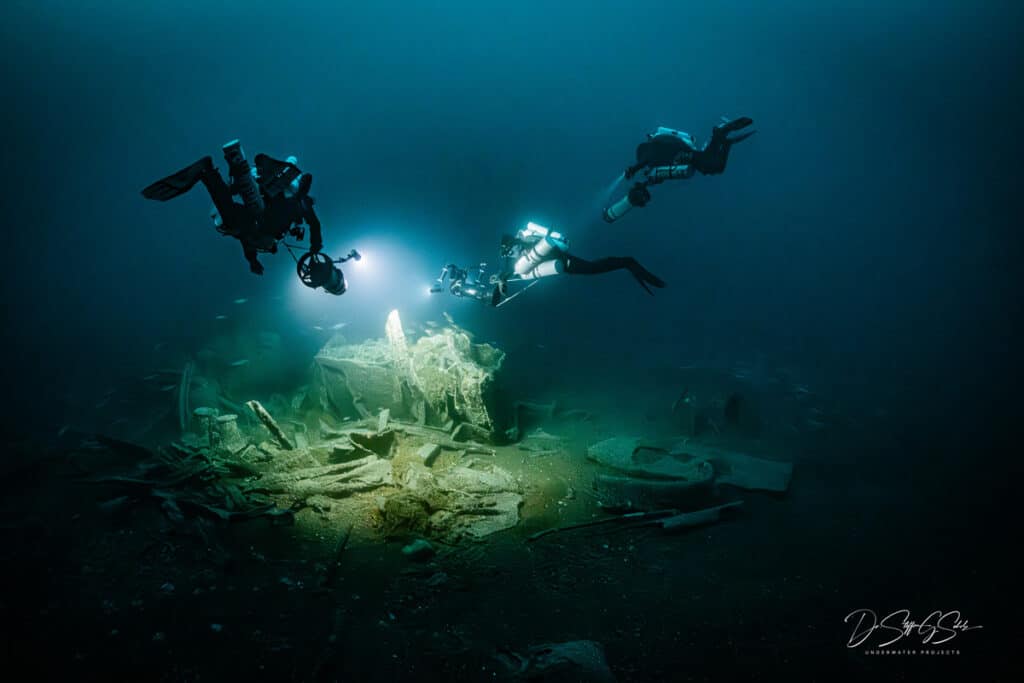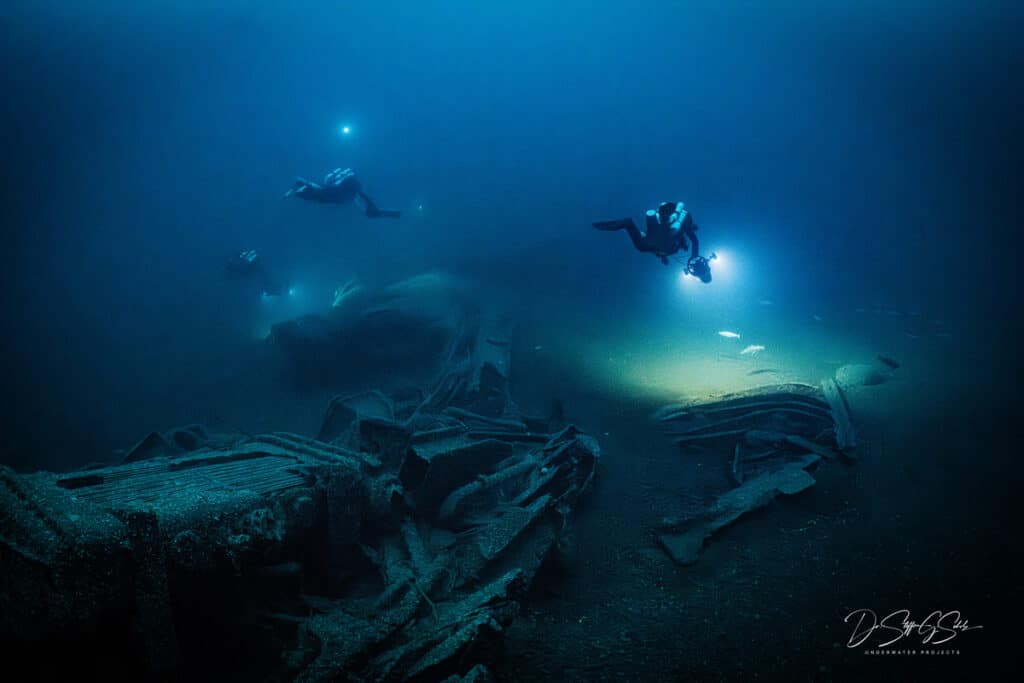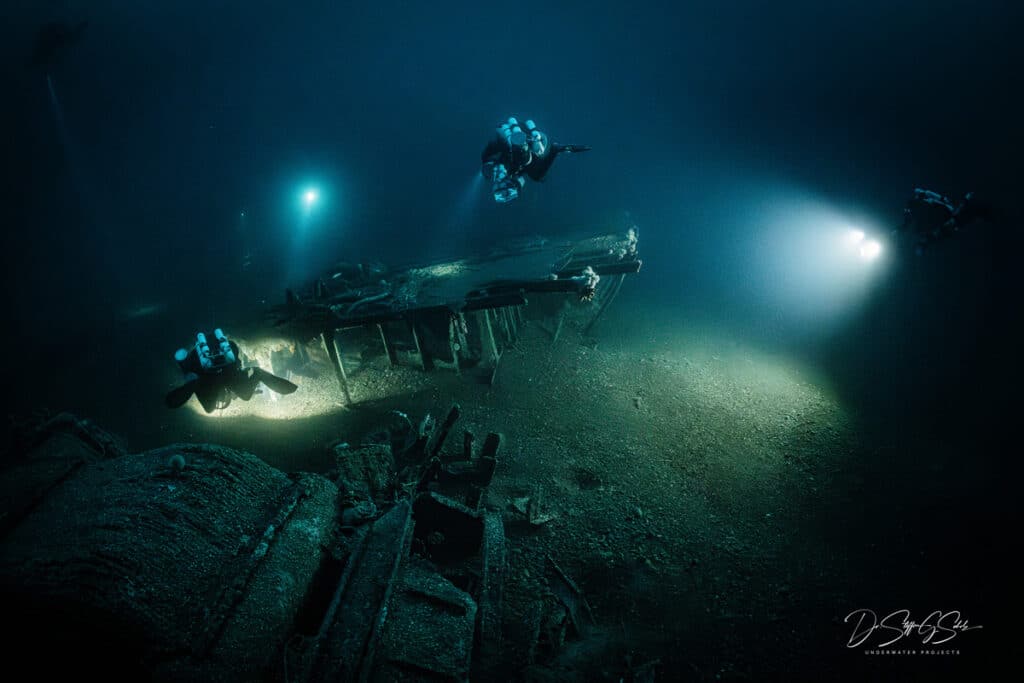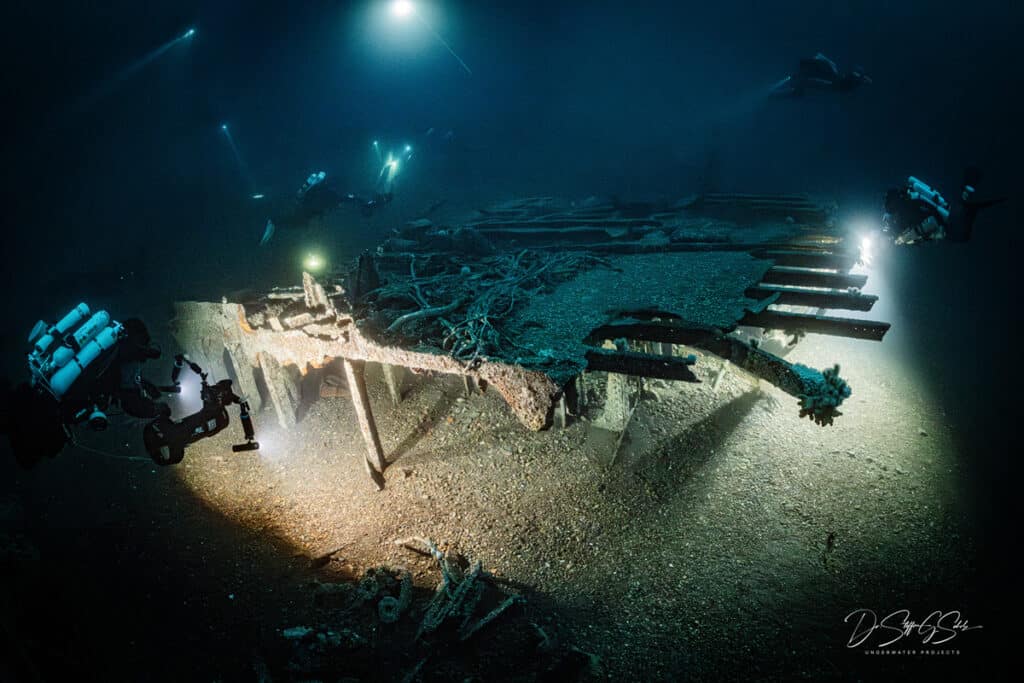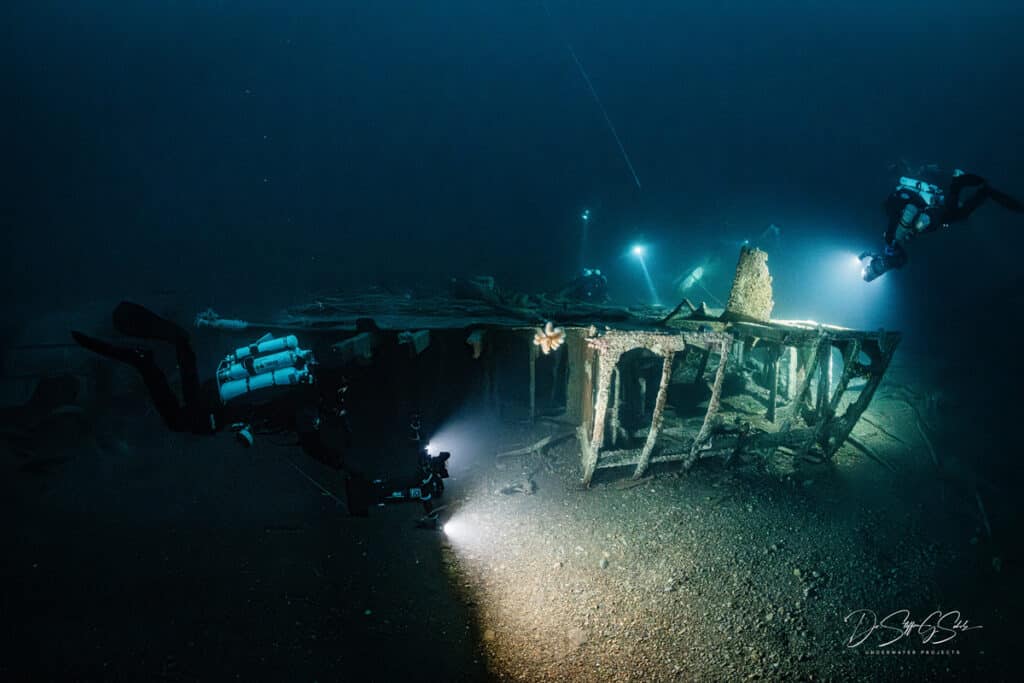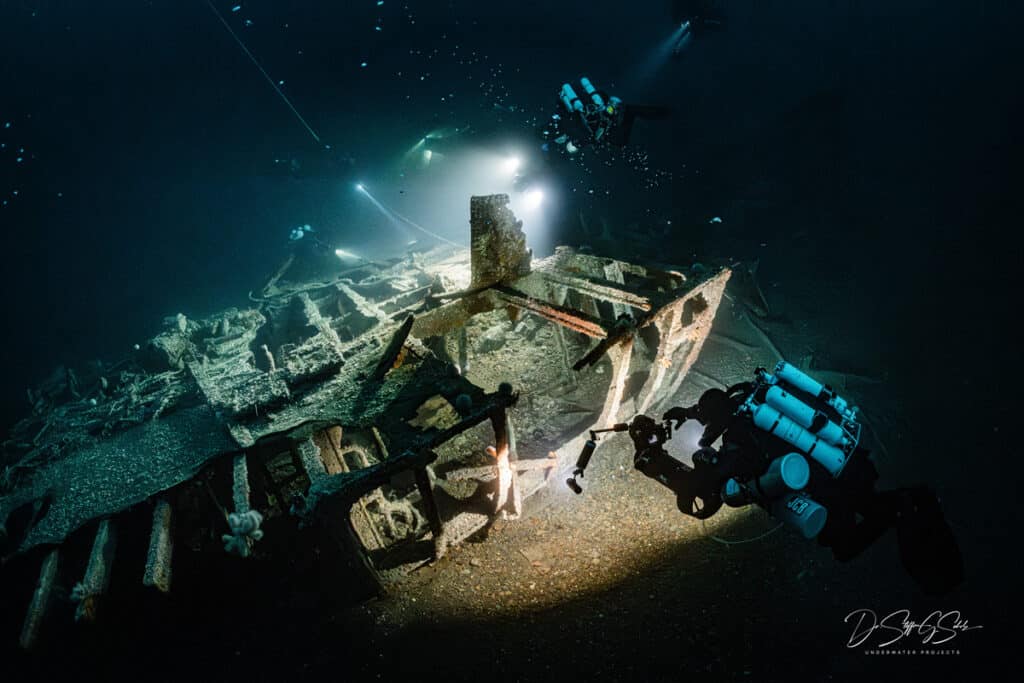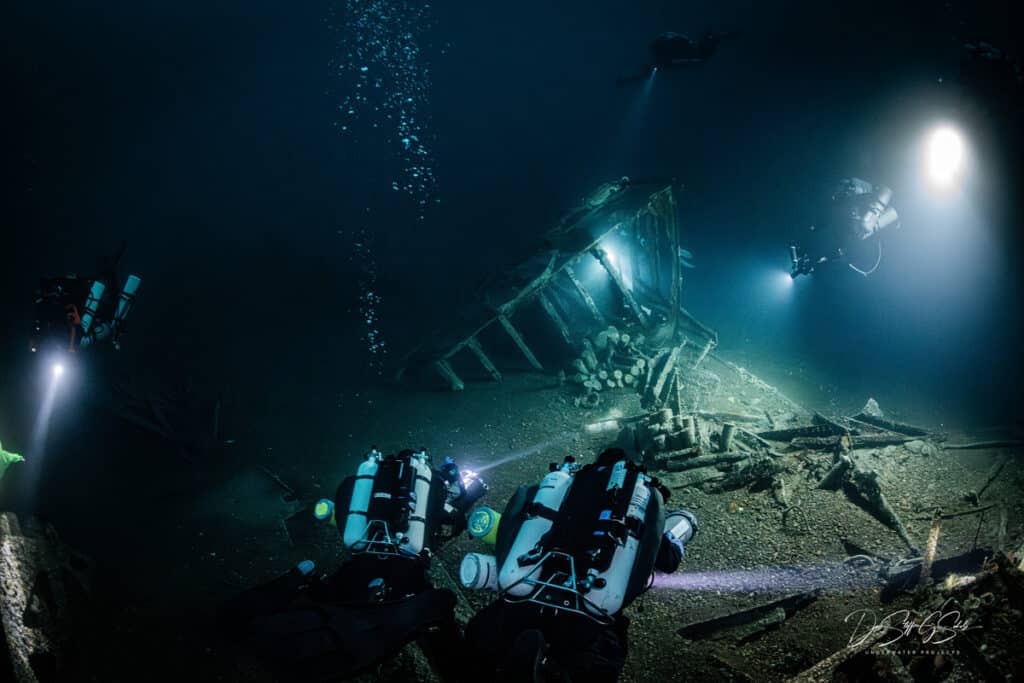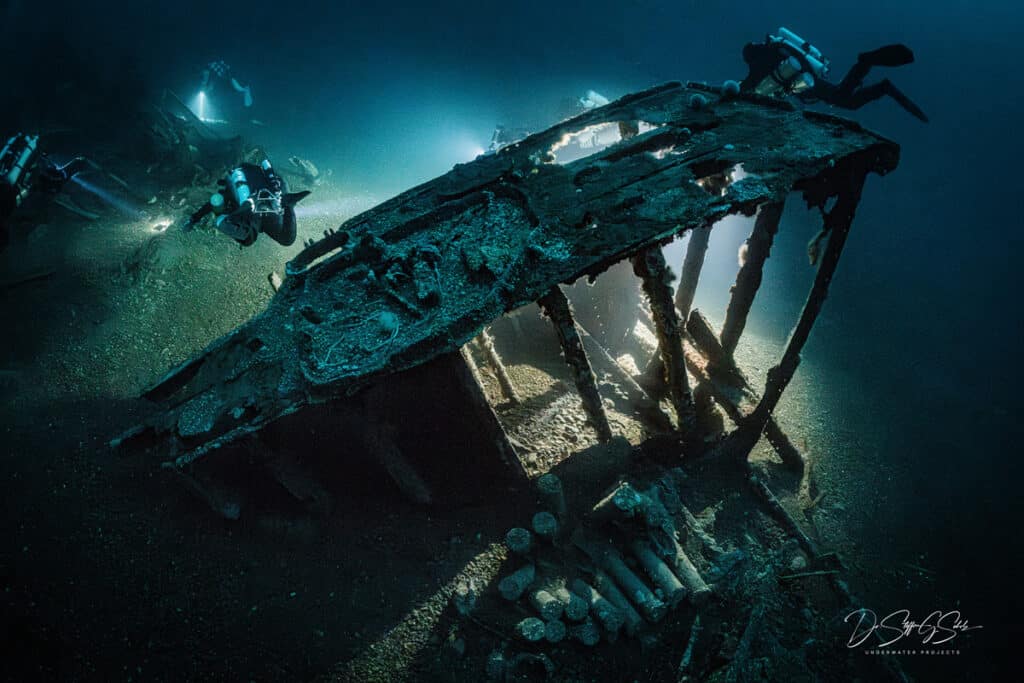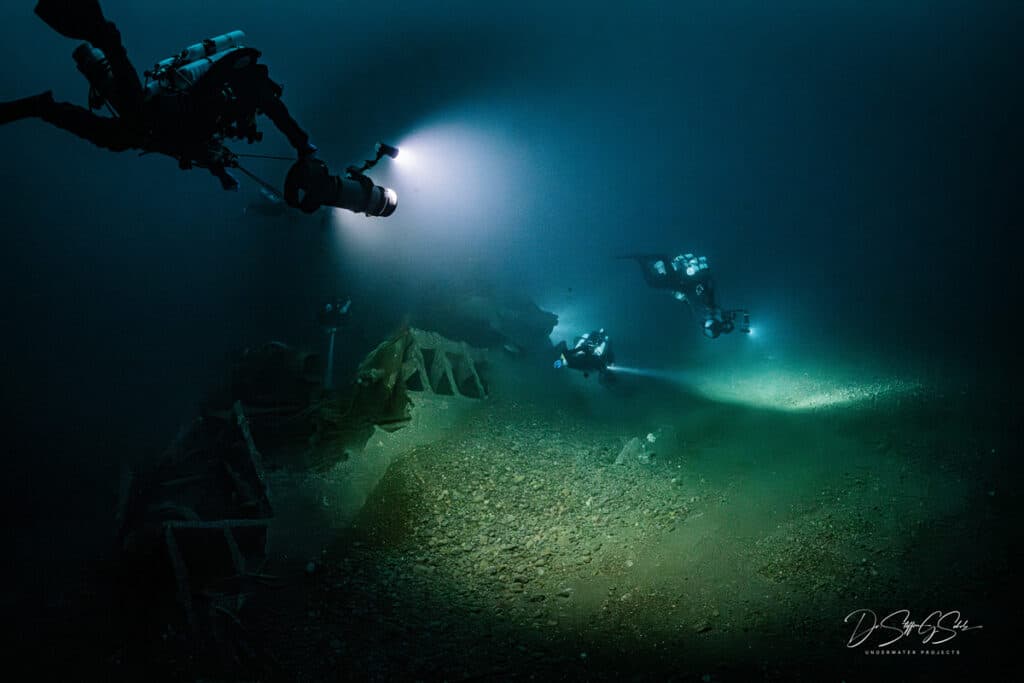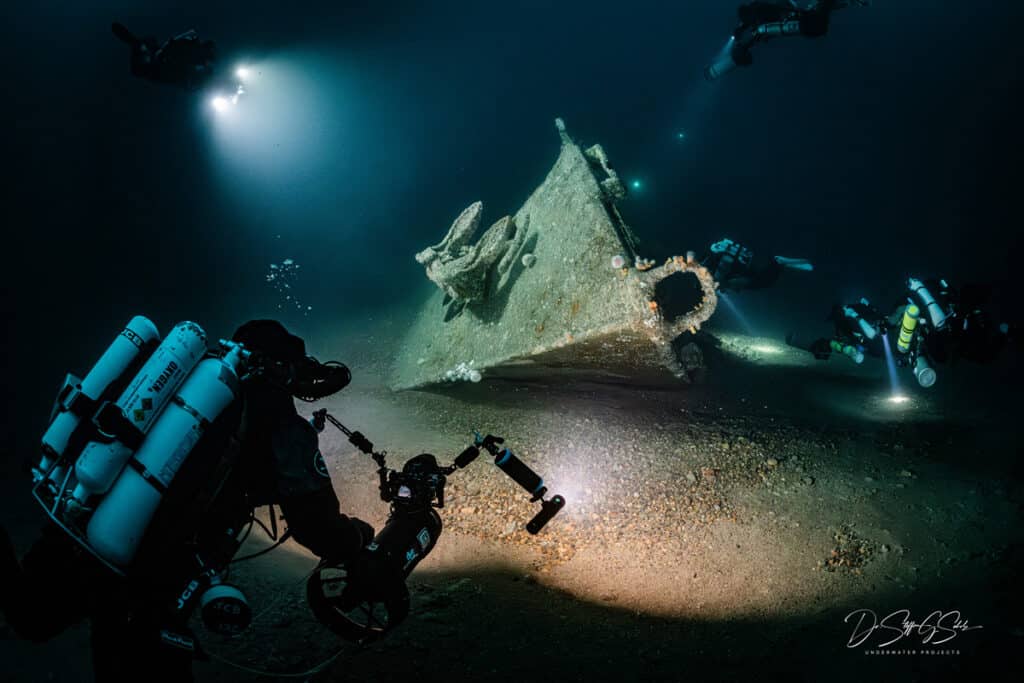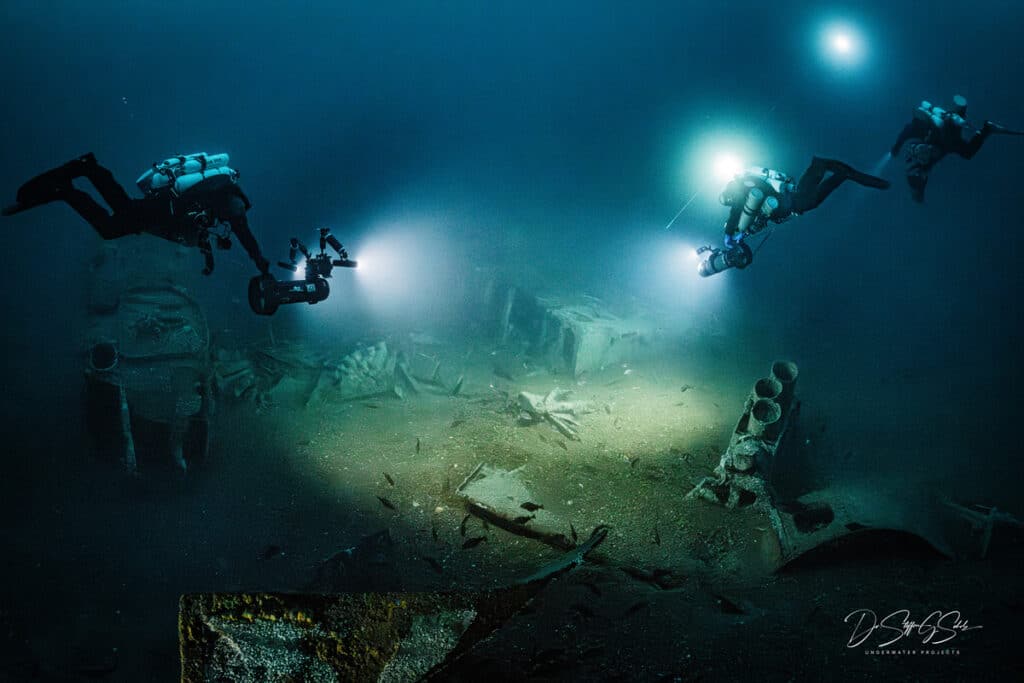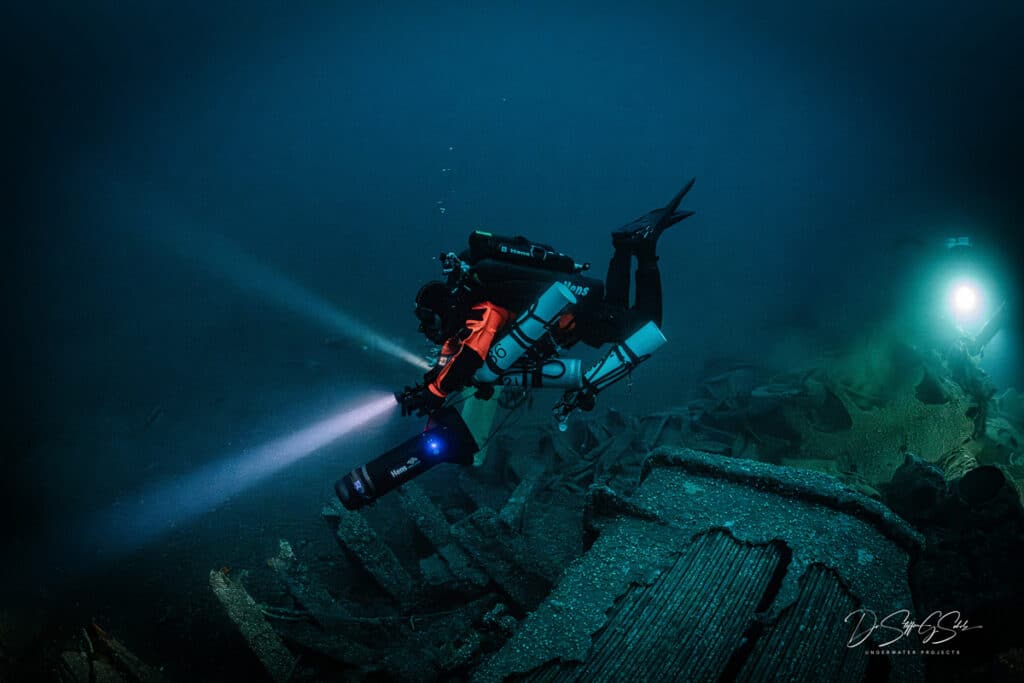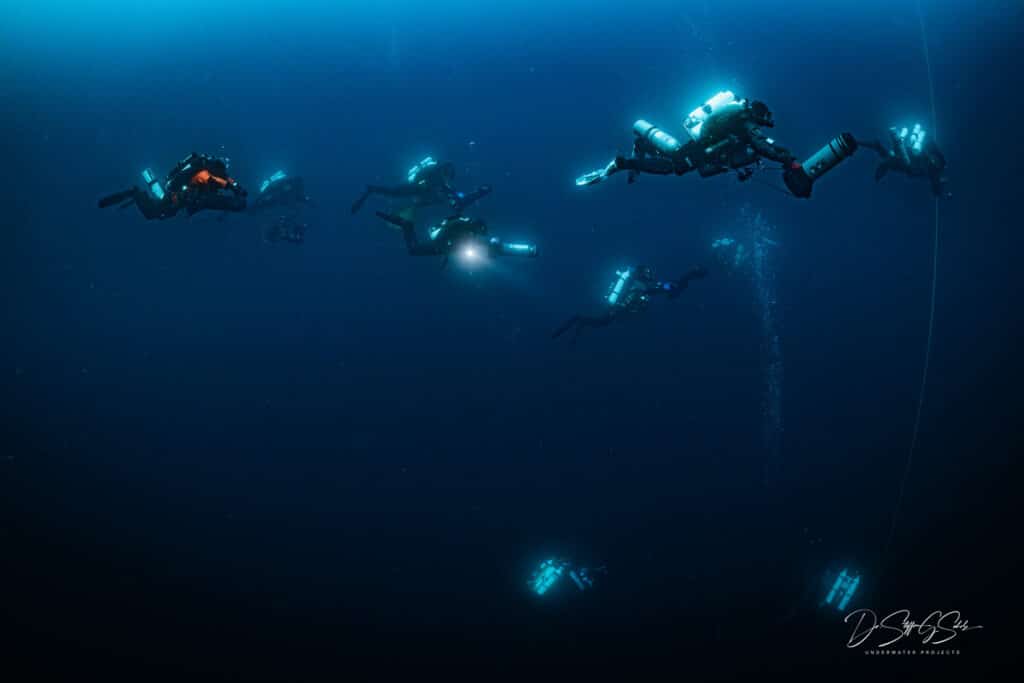Ireland Wreck Sites
Malin Head Wreck Sites

Discover the fascinating underwater world of Malin Head, home to a collection of historic and captivating shipwrecks that offer a unique glimpse into maritime history. The wrecks vary in class and type, each with its own story of tragedy, heroism, and the passage of time.
Laurentic
Class and Type: White Star Ocean Liner
Depth: 40m
Class and Type: White Star Ocean Liner
Depth: 40m
On the 23 January 1917, the 14,892-ton liner LAURENTIC, which had been converted into an Armed Auxiliary Cruiser, hit a mine off the coast of Northern Ireland. In her strong rooms were 43 tons of gold, in 3211 separate gold ingots, valued then at more than £5 million, being taken to the United States to pay for food, steel, and munitions which Britain needed to continue the war against Germany. The LAURENTIC sank so swiftly that 354 of 745 men aboard were lost and there was certainly no time to worry about the strong room.
As a direct result of that sinking, Commander Guybon Chesney Castell Damant C.B.E., a famous Navy diver, was told by the Admiralty he could have as many divers as he wanted and he could have them now. The recovery of the LAURENTIC gold was to be his top priority and he was ordered to start work immediately. He called in another well known Navy diver, Dusty Miller, and the rest of the so called ‘Tin Openers’, due to there work penetrating sunken U-boats, who were now set to work to prise gold ingots from the LAURENTIC. They were told to do it as quickly as possible as the British Government feared that aid from America would dry up if there was no gold to back up the buying power of the British pound.
On the 14th day of diving after blasting their way through to the strong room, Miller smashed open its steel door with a sledgehammer and chisel. On entering he found himself facing stacks of bullion boxes each weighting 140 pounds. Even though he was over his bottom time, Dusty manhandled one of the boxes back to the deck and the next day on his 60-minute ‘shift’ he got out another three. He had almost single-handedly recovered £32,000 worth of gold!
However, Dusty Miller was to pay a price for all that gold. Cautious diving had been suspended for the duration and even more so for the LAURENTIC gold recovery. Shortly after his first haul of gold he had suffered a bad attack of the ‘bends’ with acute pain in his joints. Most of the official comments seemed to be surprised that Dusty had been a bends victim as he had been considered relatively immune since his early diving training. The attack was, they thought, brought on by the heavy boxes of gold. He seems to have received some recompression treatment in a chamber on board.
Even so, the series of northerly gales, which then stopped all diving, must have been a god-sent rest for Dusty. After a solid week of huge winds and seas, Dusty and the other divers returned to the wreck, and Commander Damant went down himself. He found that the storm had turned, twisted and folded the wreck almost in half. The passage way that Dusty had used to bring up the gold boxes was now only 18 inches high and the depth of the entry point has increased from 62 feet to 103.
After a week’s more work by divers with explosives, Dusty re-entered the strong room. It was empty! All the gold ingots had slipped through holes torn in the walls and floor and had tumbled down into the tangled and twisted wreckage of the bilges. More explosives were used to cut a hole down to the gold’s new resting place. Dusty then had another attack of the bends. He had worked hard for 90 minutes at 115 feet and, according to Navy dive tables, should have been decompressed for 87 minutes. He was actually given 40 minutes. Perhaps he really was more tolerant of the bends than others, because he continued diving.
By September the divers had recovered over £800,000. In April 1917 America entered the war. Immediately, the urgency of recovering the gold eased. The Admiralty ordered work on the LAURENTIC to be halted for the duration. It was not until 1919 that the divers once again returned to claim the Treasury’s gold. Finally after cutting up almost the whole ship with explosives, there were only 25 bars still missing. Each diver got a bonus of two shillings and sixpence for every £100 raised.
Another salvage operations in 1930 recovered three more bars of gold. In July 1987 yet another operation, using bell divers, failed to find any of the other 22 bars, which are now said to be worth some £2million.
HMS Audacious
Class and Type: King George V Class Battleship
Depth: 60m
Class and Type: King George V Class Battleship
Depth: 60m
HMS Audacious was a King George V class Super-Dreadnought Battleship, measuring 596ft in length, grossed 23.000 tons and had a crew of 900. Armoury included ten 13.5 inch guns, sixteen 4 inch guns, three 21 inch torpedo tubes.
She was the first principal casualty in the First World War as she struck a mine laid by German Norddeutscher Lloyd liner SS Berlin, while leaving Lough SWilly at 08.45 on a gunnery exercise. The mine exploded on her port side just forward of her aft engine room bulkhead.
Unsuccessful attempts were made to tow her back into Lough SWilly. Her crew were evacuated on to HMS Liverpool and the White Star liner SS Olympic. She eventually sank at 21.00. No lives were lost. Her commander was Captain Dampier.
Empire Heritage
Class and Type: Tanker
Depth: 68m
Class and Type: Tanker
Depth: 68m
Empire Heritage originally built as a whaling ship named TAFELBERG in 1930 for the Sealing & Whaling Co. Ltd, owned by Irvin & Johnson, South Africa. Built by Armstrong, Whitworth & Co. and of 15,702 tons, her dimensions were 508.3×72.5×50.5 ft and her 1079 n.h.p. engines gave her a working speed of 11 knots.
On 28th January 1941, the TAFELBERG, on voyage from Barry via Greenock to the US, was seriously damaged by a mine and beached at Porthkerry. The wreck broke into two parts and was declared a total loss.
The wreck was acquired by the Ministry of War Transport and the ship was joined together again at Cardiff. From 1943, she was in service for the MOWT.
On September 8th, 1944, the Empire Heritage (Master James Jamieson), on voyage in convoy HX-305 from New York to Liverpool and the Clyde with DBS passengers, 16,000 tons of fuel oil and 1,900 tons of deck cargo including Sherman Tanks, was torpedoed by the German submarine U- 482.
When the PINTO stopped to rescue people, she was herself torpedoed by the U-482 The master, 49 crew members, eight gunners, one convoy signalman, one army storekeeper and 52 DBS passengers from the Empire Heritage were lost. In total, 112 people lost their lives on the Empire Heritage and another 18 on the PINTO.
Note: DBS stands for Distressed Bristish Seaman, crew members who were rescued from earlier shipwrecks.
HMS Justicia
Class and Type: Ocean Liner
Depth: 72m
Class and Type: Ocean Liner
Depth: 72m
When WWI began, the works on NASM´s prestigious ship, Statenham were delayed. Statendam was supposed to be the flagship of the company. With 706 crew, she had accomodations for 600 1st class, 600 2nd class and 2300 3rd class passengers.
The British decided to continue to finish the ship. In 1916 she was ready and renamed Justicia and was supposed to be managed by Cunard (names ending with -ia).
However, the White Star line (ship´s name ending with -ic) just lost their Brittanic and had plenty of crew available. As a consequence, they were appointed to manage the Justicia.
This is a unique case, where an -is named ship was being managed by their worst competitor.
On Friday 19th, 1918, she was twice hit by torpedoes from UB-64. Justicia lost power and was then taken in tow by HMS Sonia. The next day however, she was again torpedoed twice by another U-boot UB- 124 and sank.
UB-64 escaped, but UB-124 was successfully hunted and sunk.
U-89
Class/Subtype: Mittel U class Submarine
Depth: 62m
Class/Subtype: Mittel U class Submarine
Depth: 62m
[Fate of Uboats in WWI:] U-89; Cmdr. Bauck, III Flotilla . Rammed by escort ship ROXBURGH, off N.E. of Ireland, 12 February 1918. Rammed by HMS Roxburgh, 24 miles North of Malin Head, Ireland.
U-2511
Class/Subtype: XXI Class Submarine
Depth: 67m
Class/Subtype: XXI Class Submarine
Depth: 67m
U-2511 was a German submarine Type XXI. She surrendered at Bergen, Norway in May 1945. Transferred from Bergen, Norway to Lisahally, Northern Ireland on the 14th June 1945 for Operation Deadlight. On the 2nd January 1946 she was taken to Moville. From there she was sunk on the 7th January 1946 at 19.40 hours.
Carthaginian SS
Class and Type: Ocean Liner
Depth: 58m
Class and Type: Ocean Liner
Depth: 58m
Carthaginian SS was a 4,444 grt British Ocean Liner defensively armed of the Allan Line built in 1884. In 1915 she was acquired by the Canadian Pacific Line. On the 14th June 1917 when 2½ miles Nw from Innistrahul Light House, she hit a mine laid by German submarine U-79 and sank off Innistrahull, Ireland. She was on route from Glasgow to Montreal. No lives lost.
Pinto
Class and Type: Cargo Ship
Depth: 64m
Class and Type: Cargo Ship
Depth: 64m
U-2506
Class/Subtype: XXI Class Submarine
Depth: 67m
Class/Subtype: XXI Class Submarine
Depth: 67m
U-2506 was a German submarine Type XXI. She surrendered in the 11th Flotilla. Left Bergen (Norway) on the 14th June 1945, reached Lerwick (Shetland Islands) on the 18th June. From Lerwick she was taken to Lisahally, N. Ireland on the 19th June which she reached on 21st June.
On the 1st January 1946 she reached Moville. On the 1st January 1946 she was taken to Moville. From there she was sunk on the 5th January 1946 at 1810 hours.
Roscommon
Class and Type: Cargo Ship
Depth: 77m
Class and Type: Cargo Ship
Depth: 77m
SS Roscommon, built by Workman, Clark & Co. Ltd., Belfast in 1902 and owned at the time of her loss by Union Steamship Co. of New Zealand, Ltd., London, was a British steamer of 8238 tons.
On August 21st, 1917, Roscommon, on a voyage from Manchester to Australia with general cargo, was sunk by the German submarine U-53 (Hans Rose), 20 miles northeast of Tory Island. There were no casualties.
Manchester Commerce SS
Class and Type: Cargo Ship
Depth: 83m
Class and Type: Cargo Ship
Depth: 83m
Manchester Commerce SS was a 5,363 grt British Merchantship. On the 27th October 1914 when 20 miles N ¼ E from Tory Island, Co Donegal, Ireland she was mined and sunk. 14 lives lost including Master. Manchester Commerce ran into a minefield laid by the North German Lloyd liner Berlin 20 miles N. of Tory Island. She was bound from Manchester to Quebec and sank on October 26th, 1914, with the loss of 14 of her crew, including the captain.
Unfortunately owing to the nearby coastguard station not possessing telegraphic communication, it was not possible to circulate the news of the steamship´s loss at once. As a result of this the loss of the ship was not known to the Admiralty until after a battle squadron had steamed into the minefield, and on the next day the battleship Audacious was lost in the same area through striking a mine.
D-6
Class and Type: D Class Submarine
Depth: 90m
Class and Type: D Class Submarine
Depth: 90m
Sunk by UB 73 off the coast of N. Ireland. (Ships of the Royal Navy Vol 1).
HMS Transylvania
Class and Type: Ocean Liner
Depth: 129m
Class and Type: Ocean Liner
Depth: 129m
In August 1939 the passenger ship Transylvania of the Anchor Line (Henderson Bros) Ltd, Glasgow was requisitioned by the Admiralty and converted to an armed merchant cruiser. Conversion was completed on 5 October 1939.
At 01.00 hours on 10 August 1940, HMS Transylvania (Capt. Francis Nigel Miles, Obe, (retired)) was hit aft of the stack by one G7e torpedo from U-56 about 40 nautical miles northwest of Malin Head, Donegal. The ship of the 10th Cruiser Squadron on Northern Patrol had been spotted by the U-boat only 15 minutes before and the Germans had to left her behind because they had no torpedoes left. The disabled vessel was taken in tow but later foundered, while nearby trawlers rescued about 300 officers and ratings.
HMS Viknor
Class and Type: Patrol Boat
Depth: 89m
Class and Type: Patrol Boat
Depth: 89m
5.347 tons; 421×50 ft; Built by Robert Napier in 1888 as the Atrato for the Royal Mail Steam Co. Ltd.
S/S Atrato was a beautifully designed passenger ship, more resembling a luxury yacht than a liner. She was used in the service between England and the West Indies and could carry up to 280 passengers. Bought by Viking Cruising Co. Ltd. in 1912, she was renamed Viking.
At the beginning of WWI, she was requisitioned by the Admiralty, equipped with armament, and renamed HMS Viknor. She was mainly used as a cruising patrol ship.
On 13th January 1915, while on patrol, she sank in heavy weather without any distress call. It was assumed that she was sunk by a mine, belonging to a minefield laid by the Germans. Not a single soul of the 295 crew was saved. Many of the bodies were washed ashore days after the sinking.
SS Devonian
Class and Type: Ocean Liner
Depth: 75m
Class and Type: Ocean Liner
Depth: 75m
SS Devonian, built by Harland & Wolff, Ltd., Belfast in 1900 and owned at the time of her loss by F. Leyland & Co., Ltd., Liverpool, was a British passenger steamer.
On August 21st, 1917, SS Devonian, on a voyage from Liverpool to Boston, with general cargo, was sunk by the German submarine U-53 (Hans Rose), 20 miles northeast of Tory Island. 3 persons were killed.
HMS Hurst Castle
Class and Type: Corvette
Depth: 85m
Class and Type: Corvette
Depth: 85m
Hurst Castle HMS was a British Royal Navy Castle Class Corvette of 1,010 tons built in 1944 and were an updated version of the much more numerous Flower-class corvettes of the Royal Navy, and started appearing during late 1943. They were equipped with radar as well as asdic. On the 1st September 1944 she was torpedoed by German submarine U-482 and sunk. 19 men lost.
SS Boniface
Class and Type: Cargo Ship
Depth: 52m
Class and Type: Cargo Ship
Depth: 52m
On August 23rd, 1917, the British steamer HMAS Boniface, on a voyage from New York to Clyde with general cargo, was sunk by the German submarine U-53 (Hans Rose), 7 miles NExN of Arranmore. 1 was killed.
RMS Amazon
Class and Type: Cargo Ship
Depth: 113m
Class and Type: Cargo Ship
Depth: 113m
The fury of the war at sea would end the RMS Amazon, as on 15 March 1918, when he was about 30 miles from Ponta Malin, she was torpedoed without warning by the German submarine U-110, sinking a few minutes later, in position 55º49´N – 08 °06´W.
The German submarine U-52 was in the area at the time of the attack, but did not participate in the action.
Amason had left a day before Liverpool for Brazil and Plata,without escorts and with 24 passengers on board. Thick fog forced her to travel at slow speed.
On the morning of 15, when traveling at about 51 miles off the coast of Northern Ireland at 9.30, while zigzagging, she was hit by a torpedo at hold number four, where she had her coal bunker.
In just fifteen minutes the Amazon sank by the stern, and all were rescued by the destroyer HMS Moresby.
The destroyer still managed to sink the U-110 with depth bombs and rescue 9 of the crew of 48 from the German submarine.





